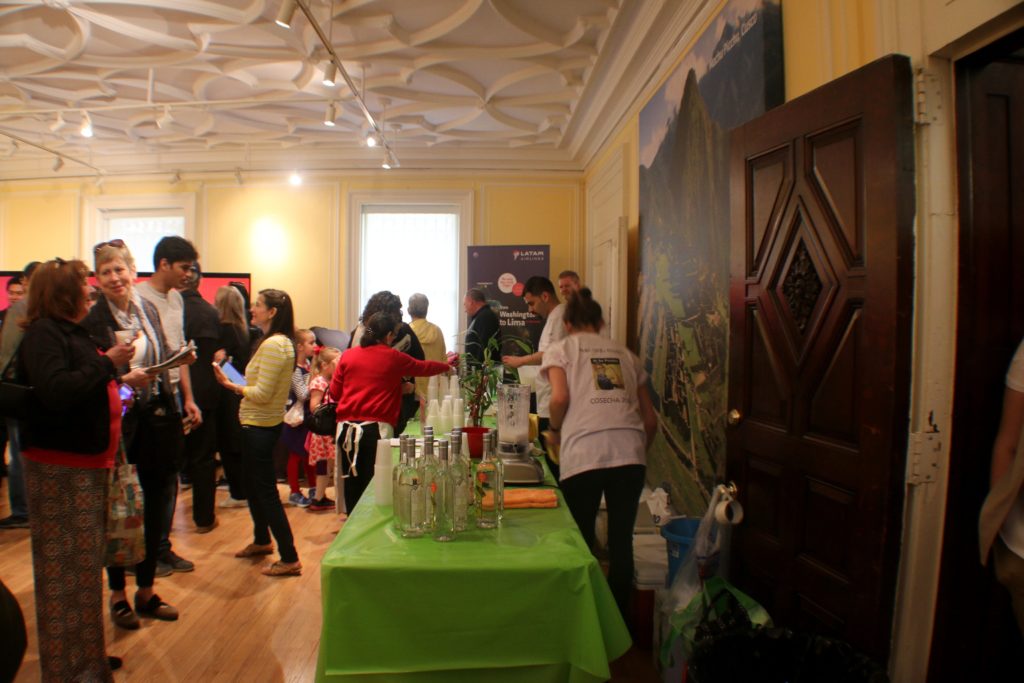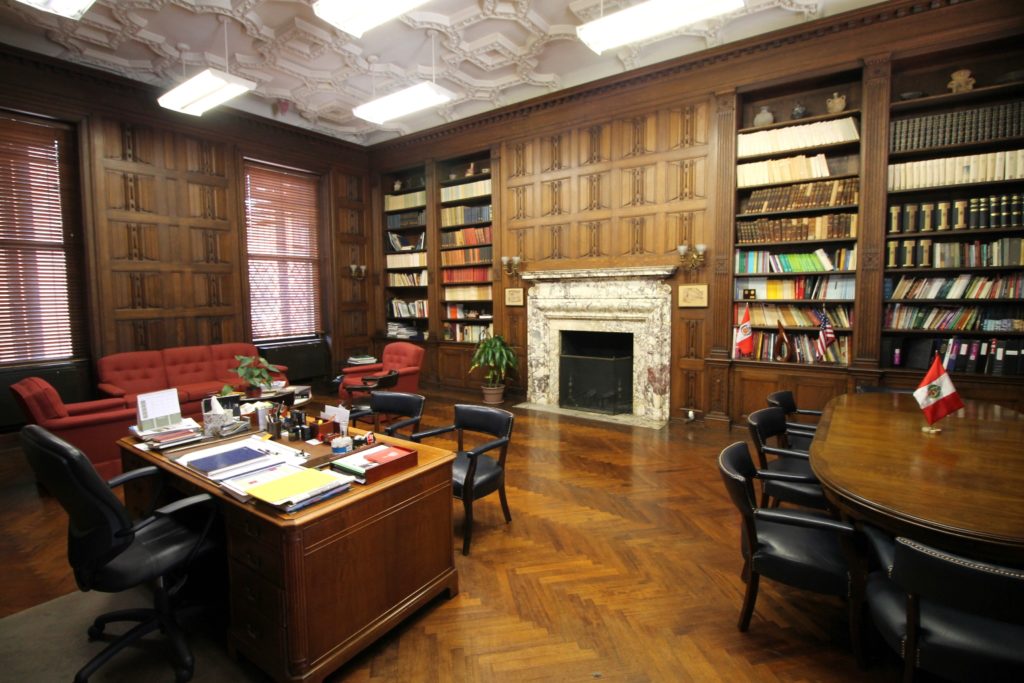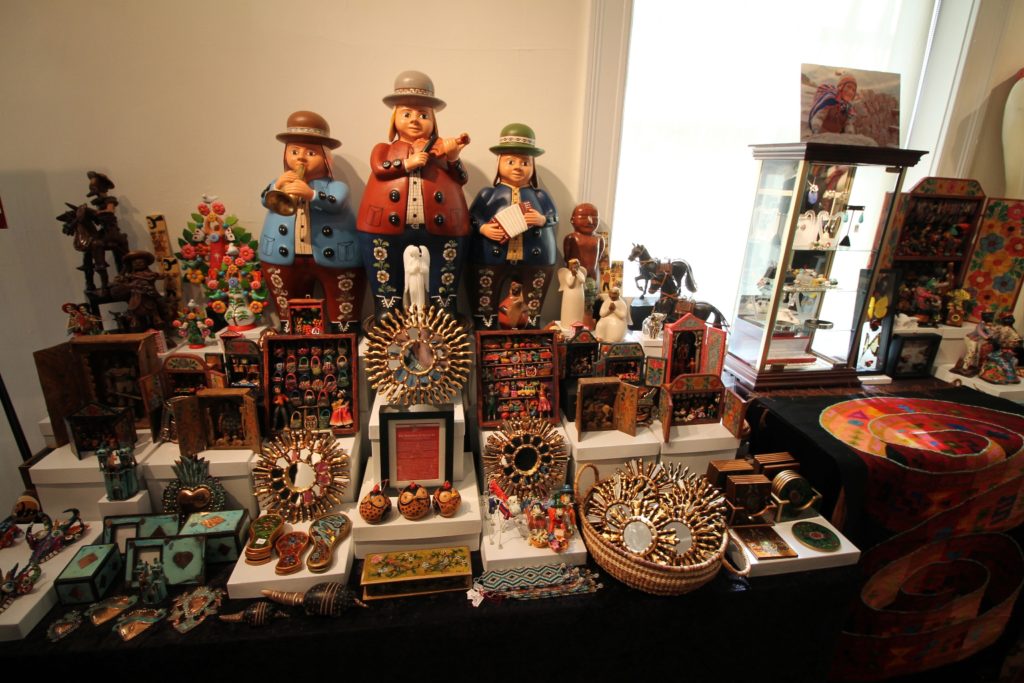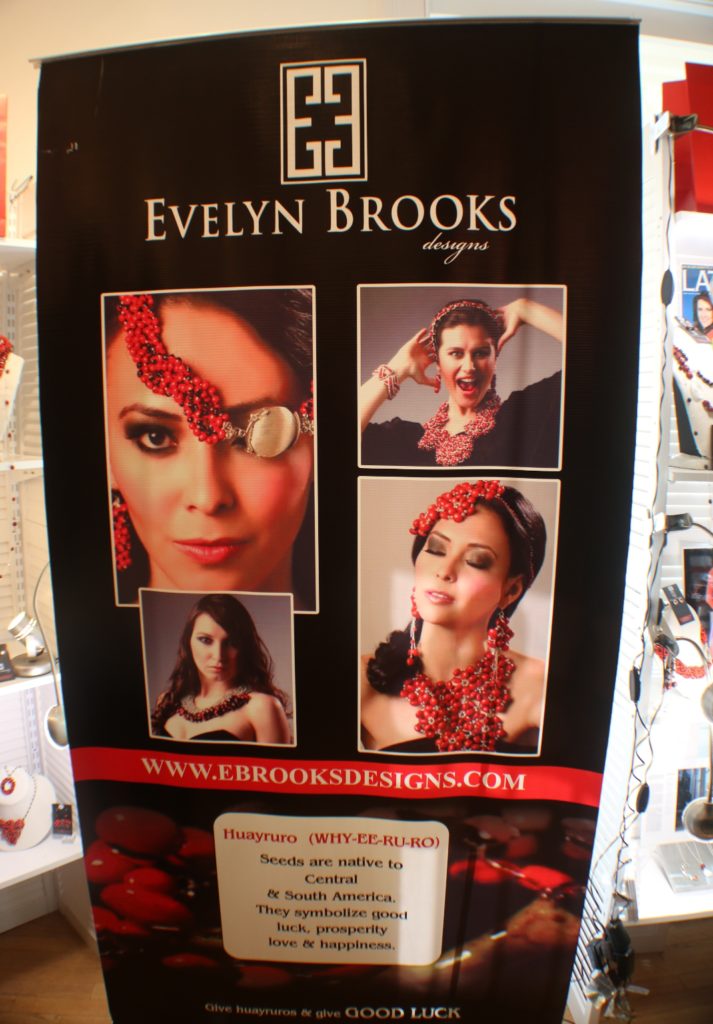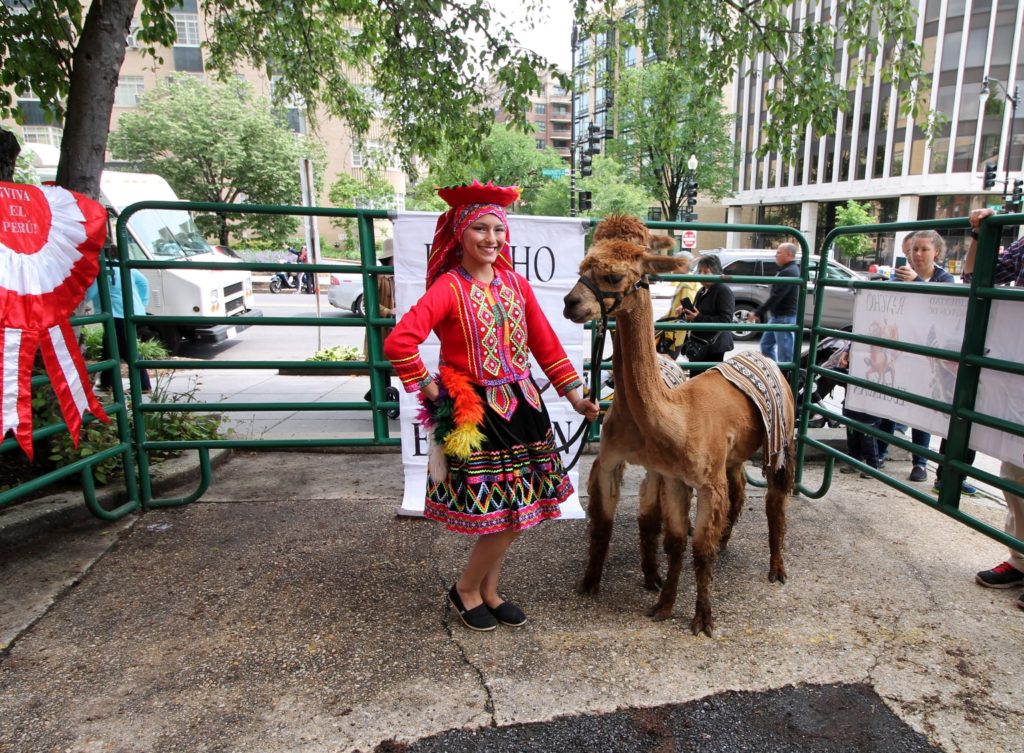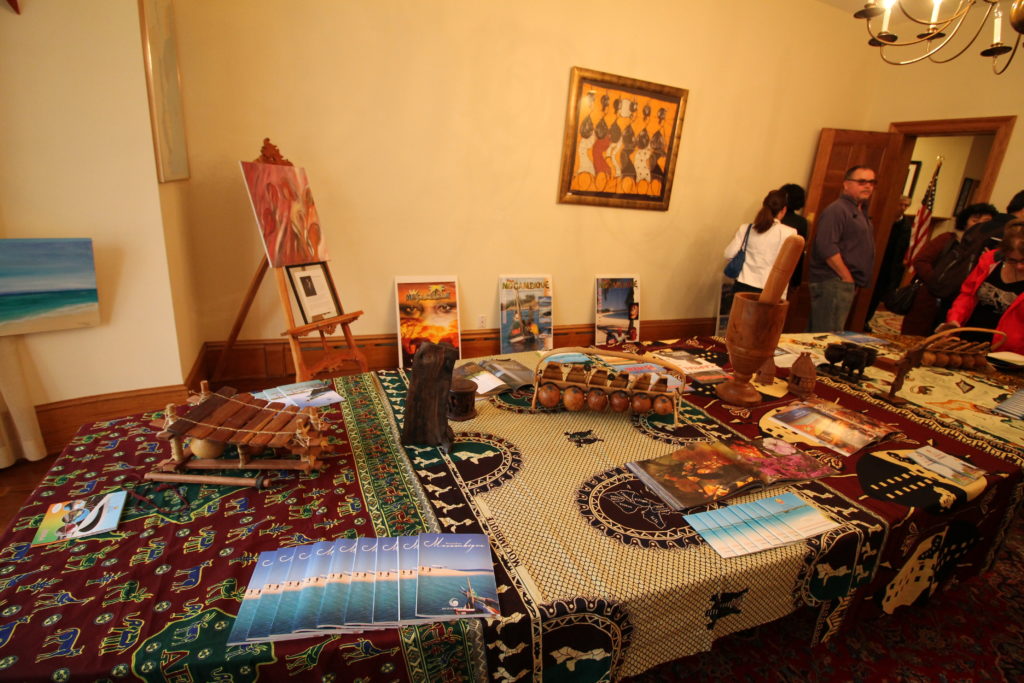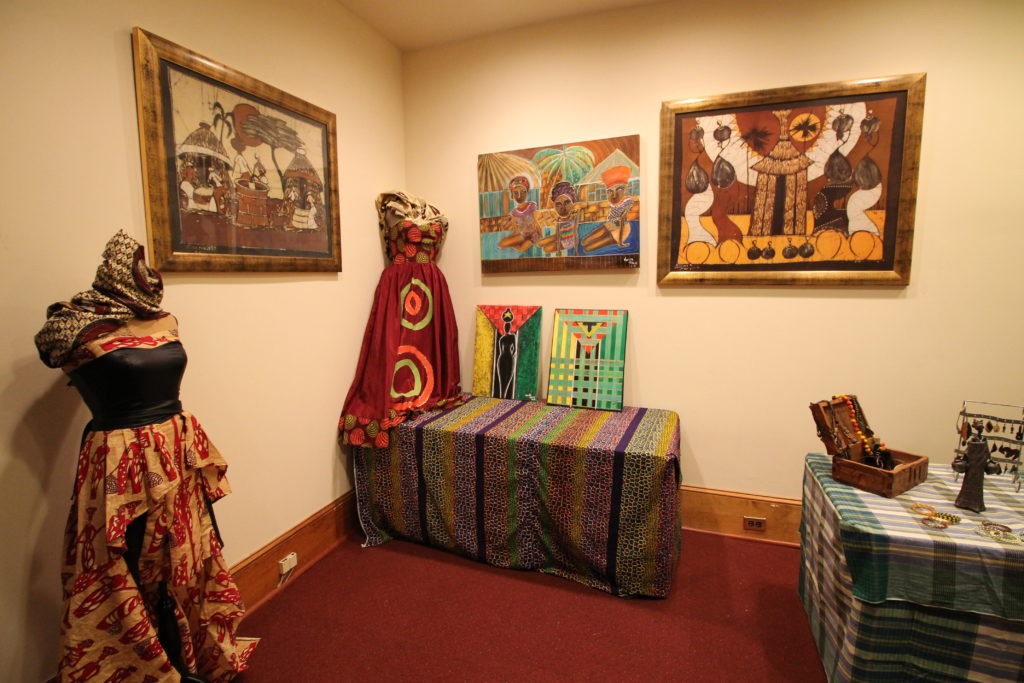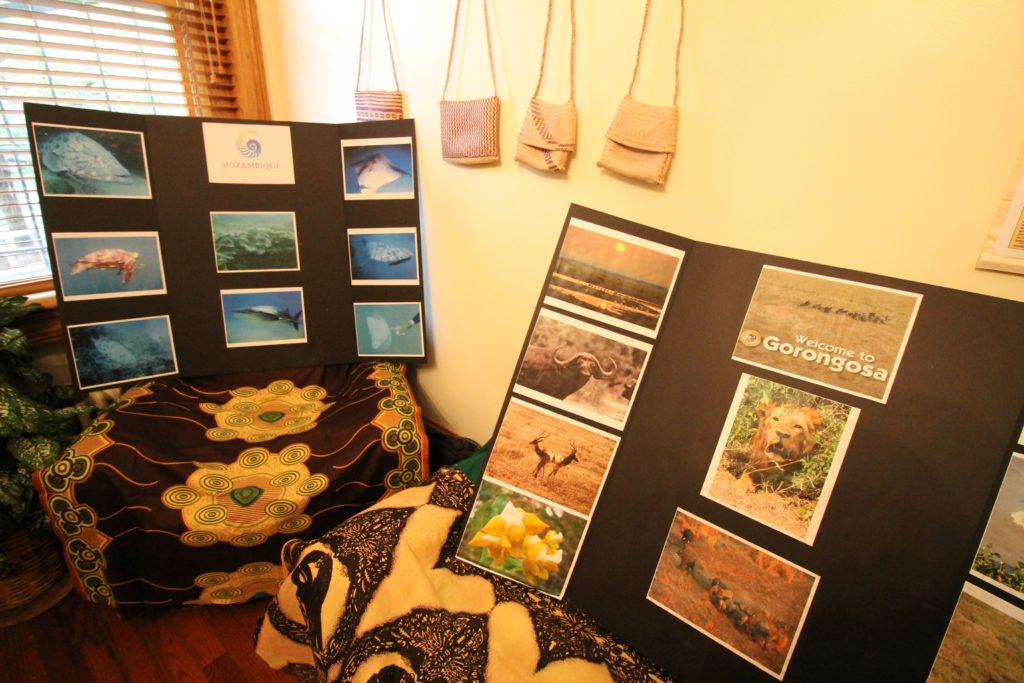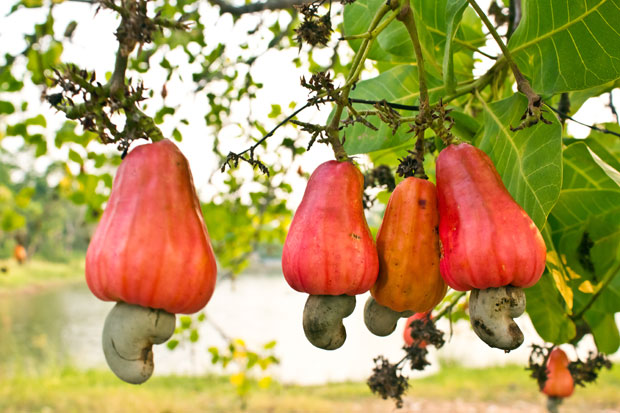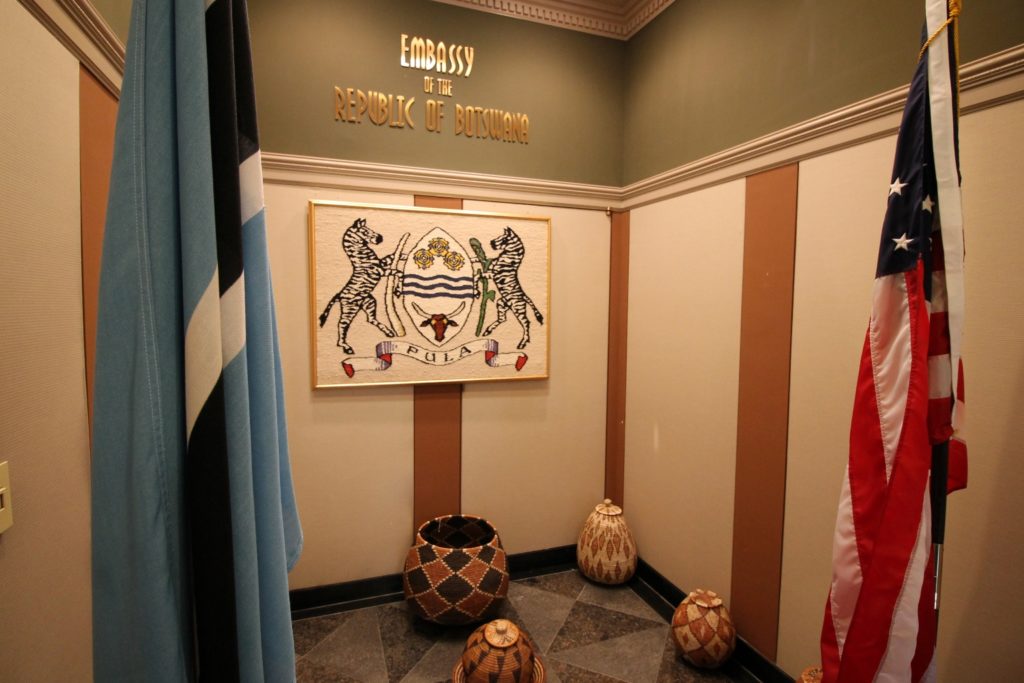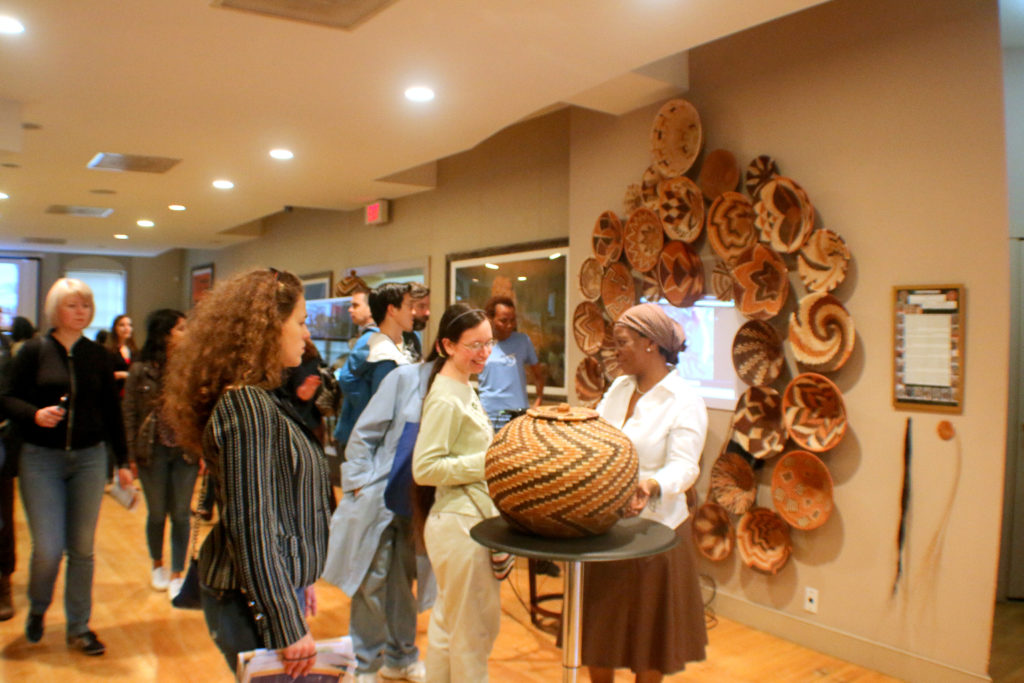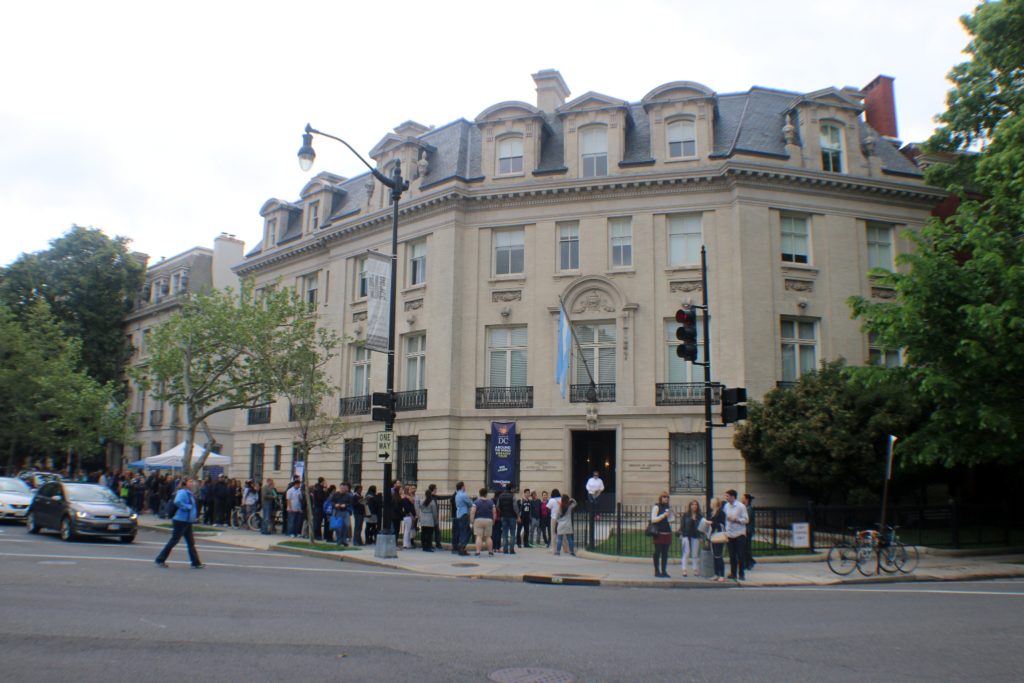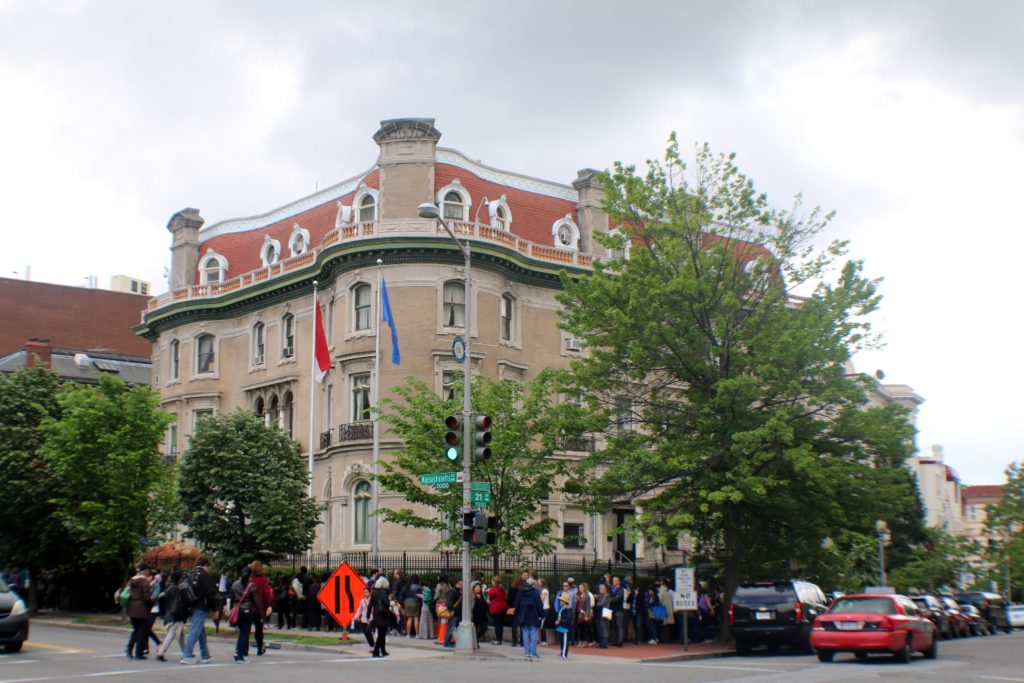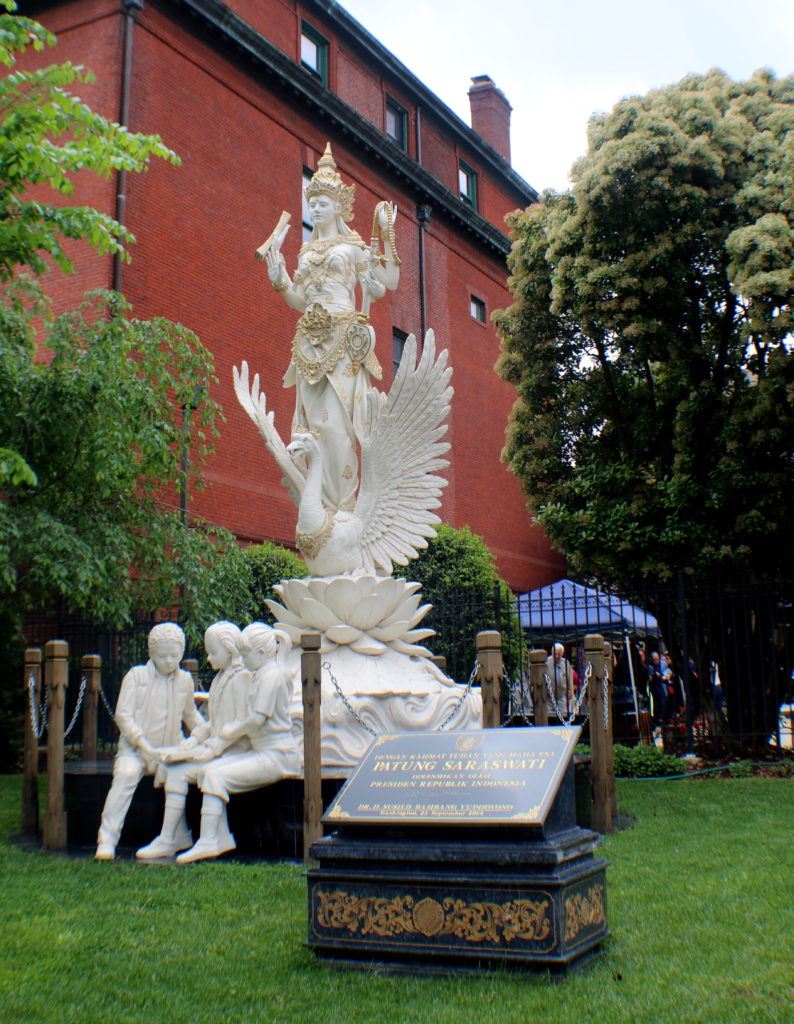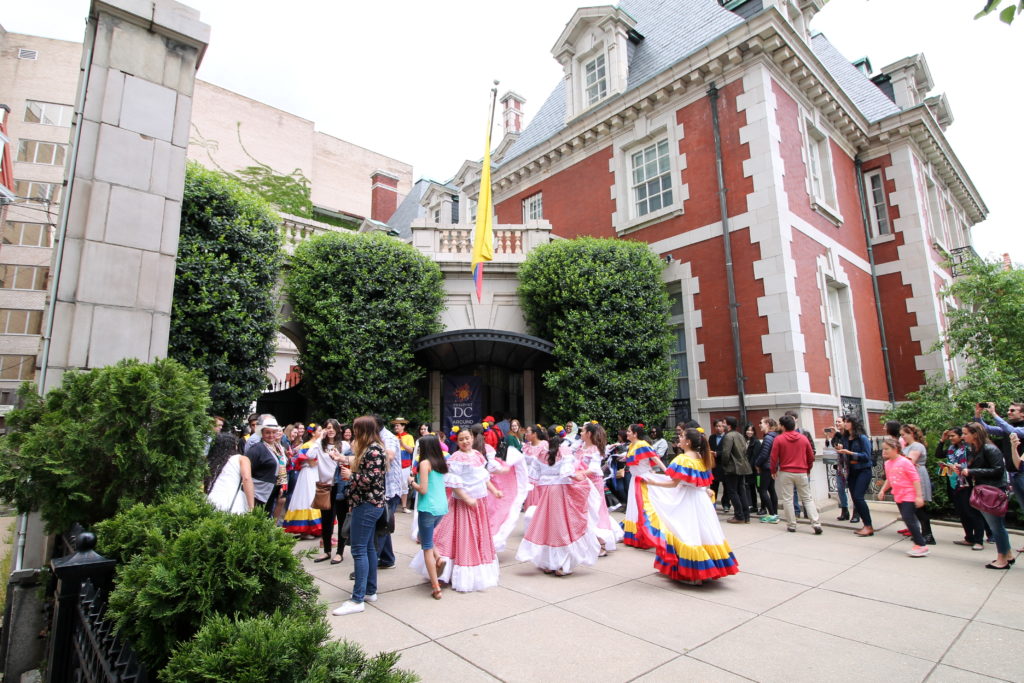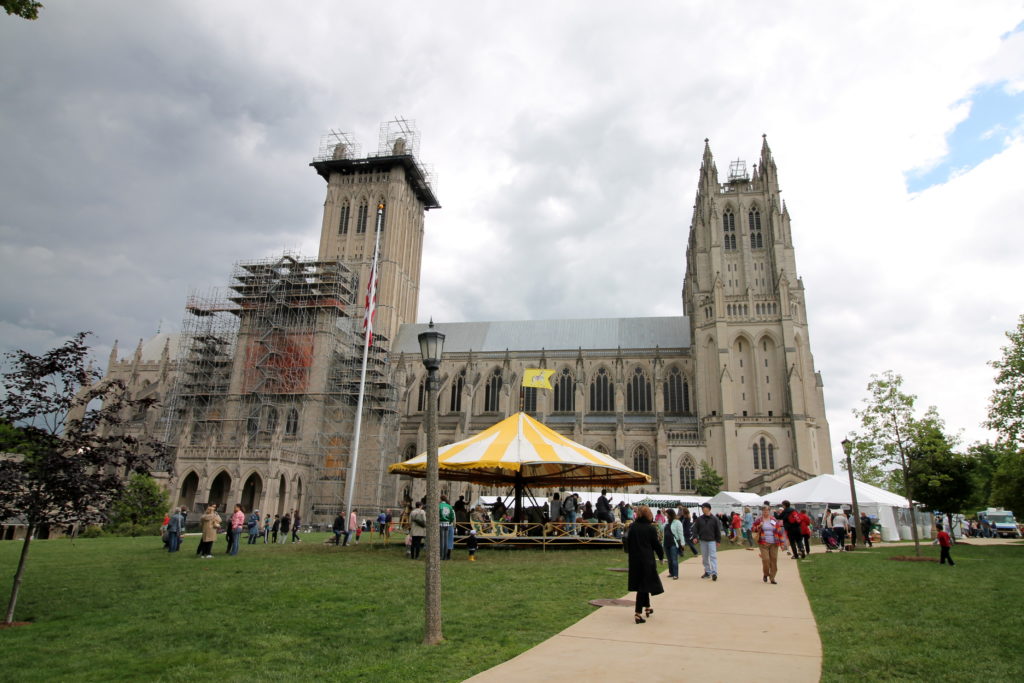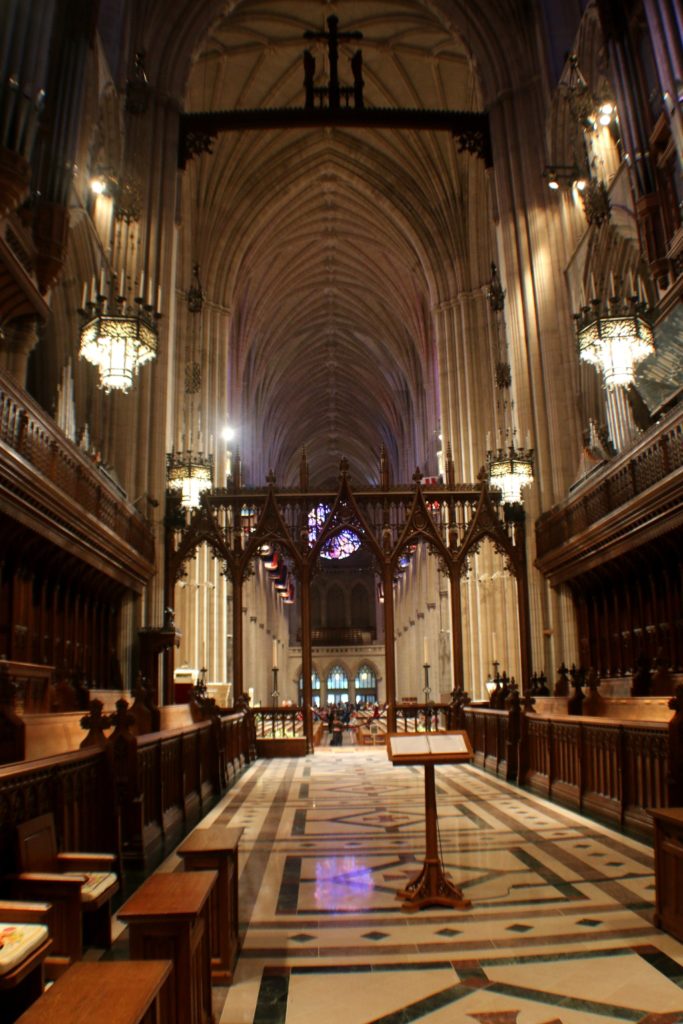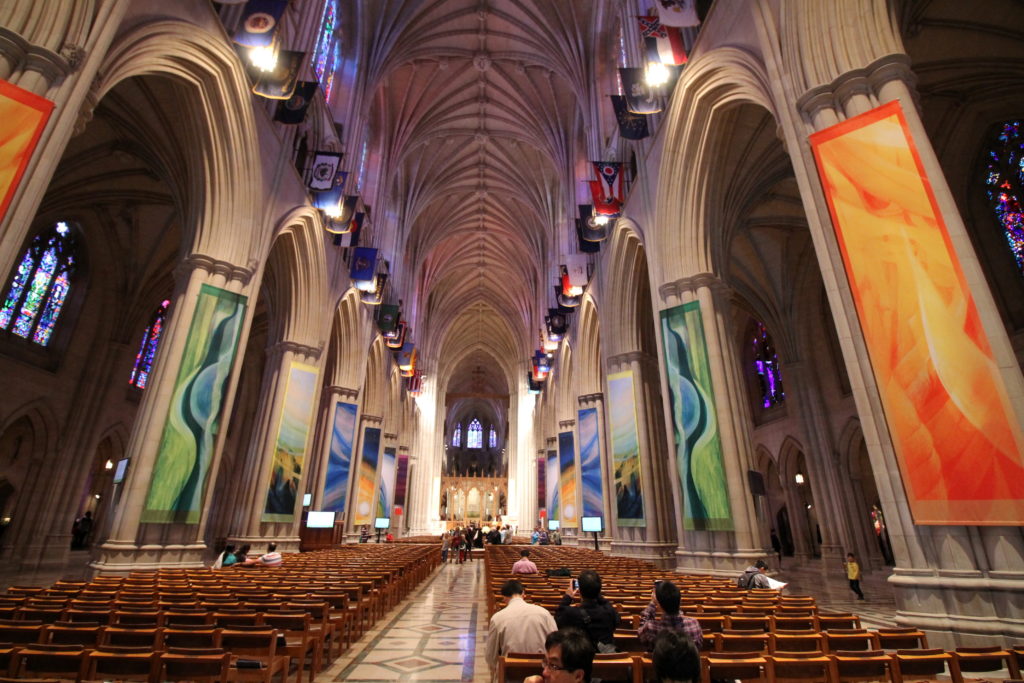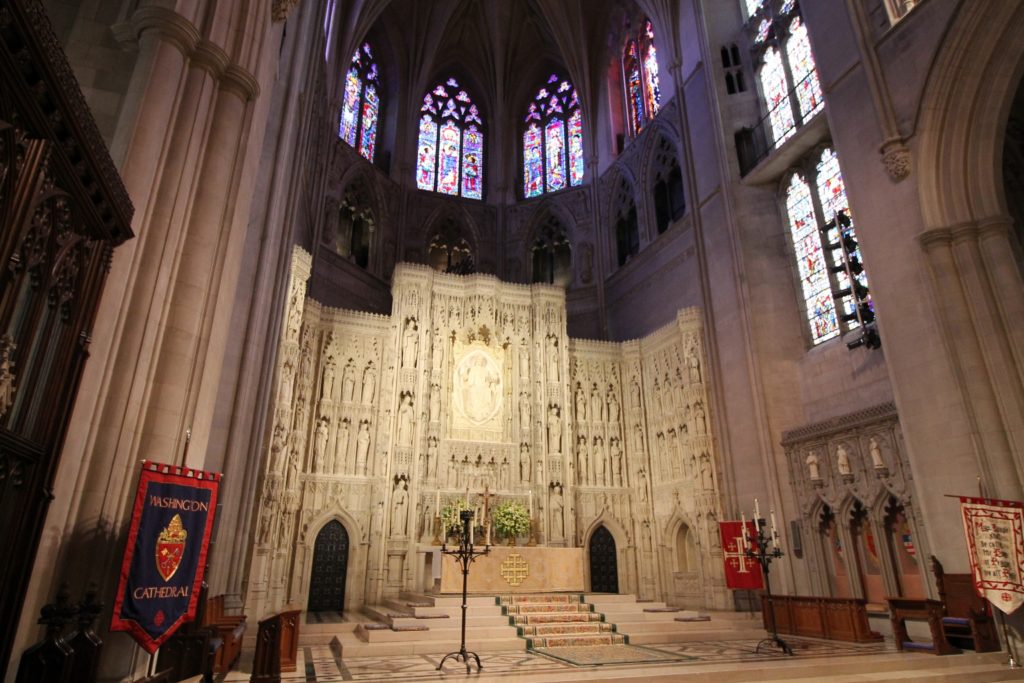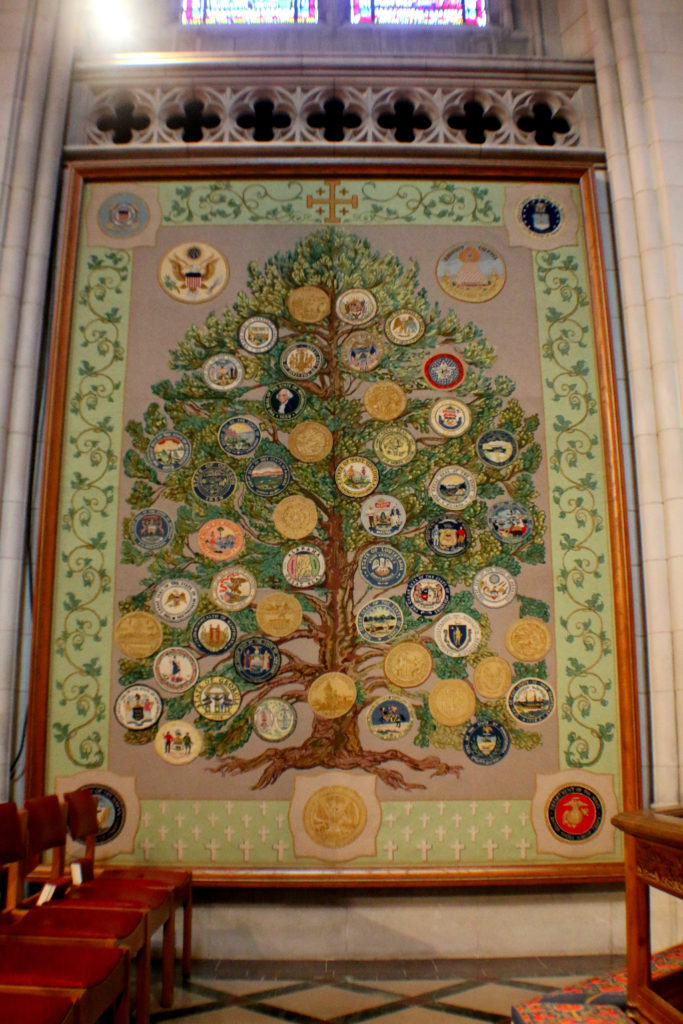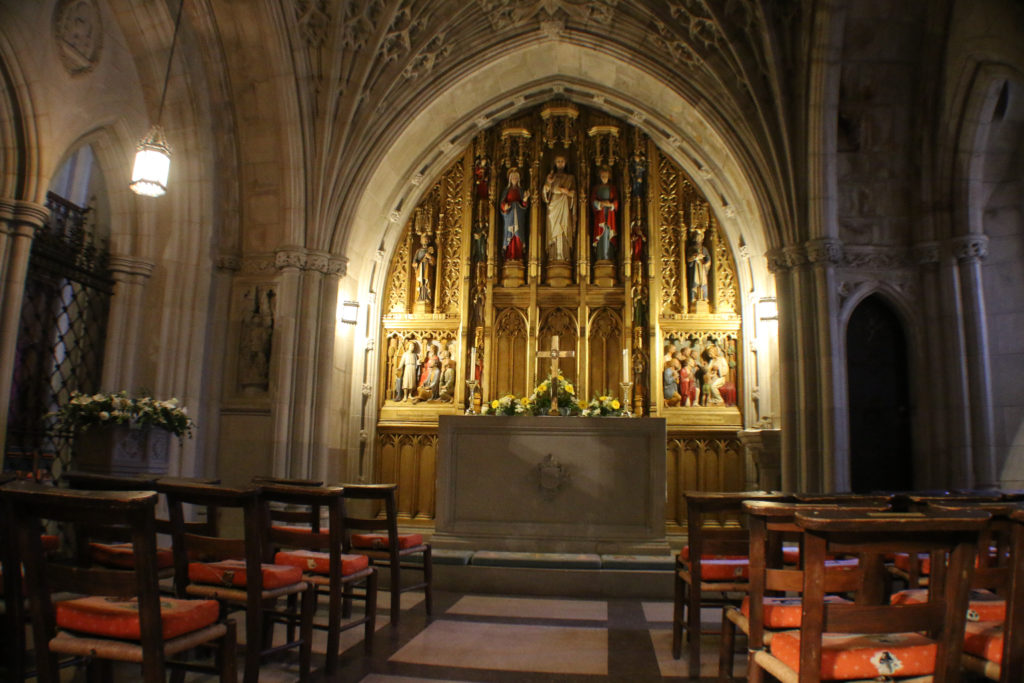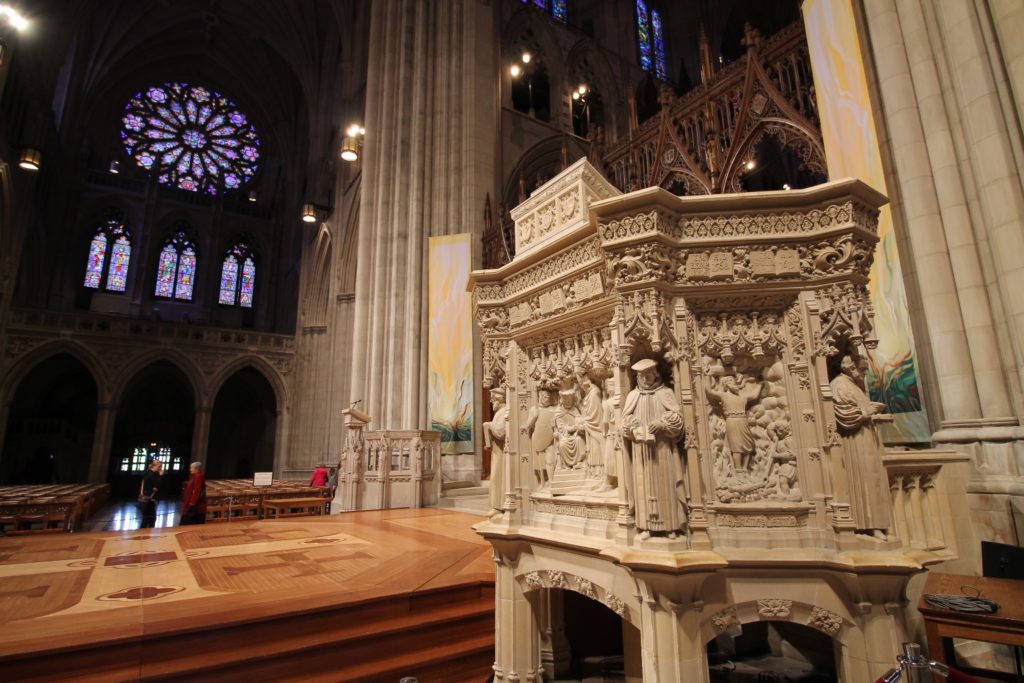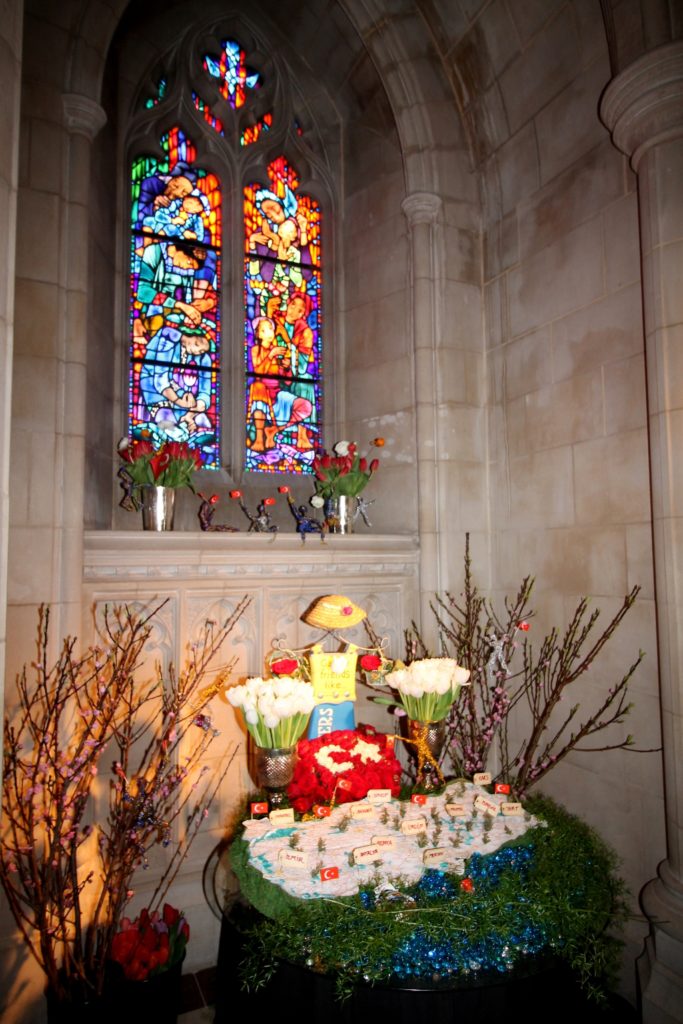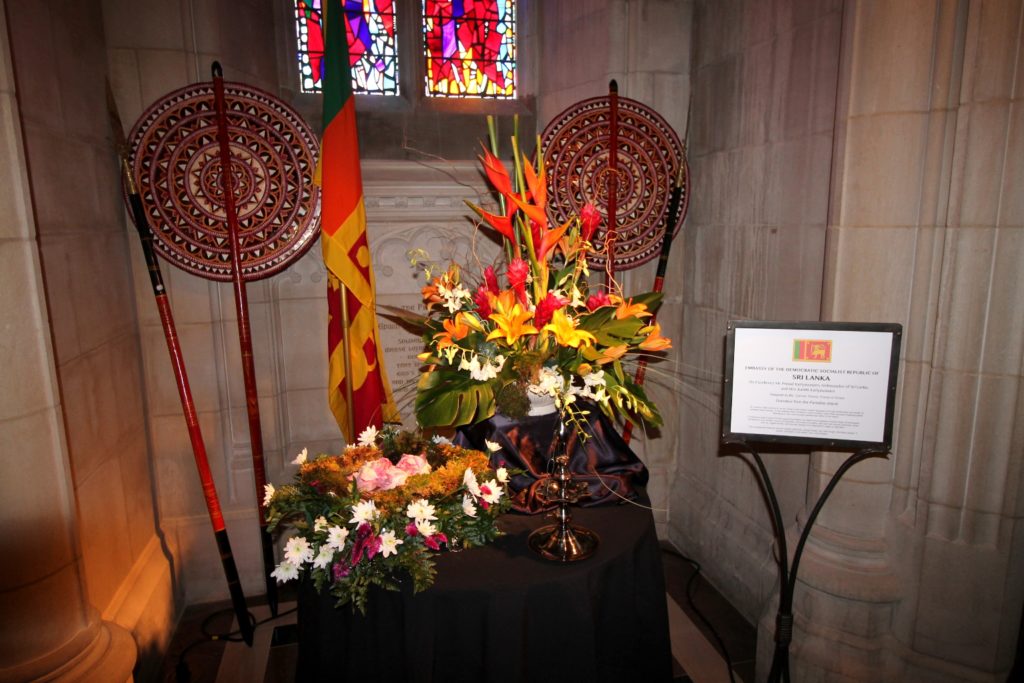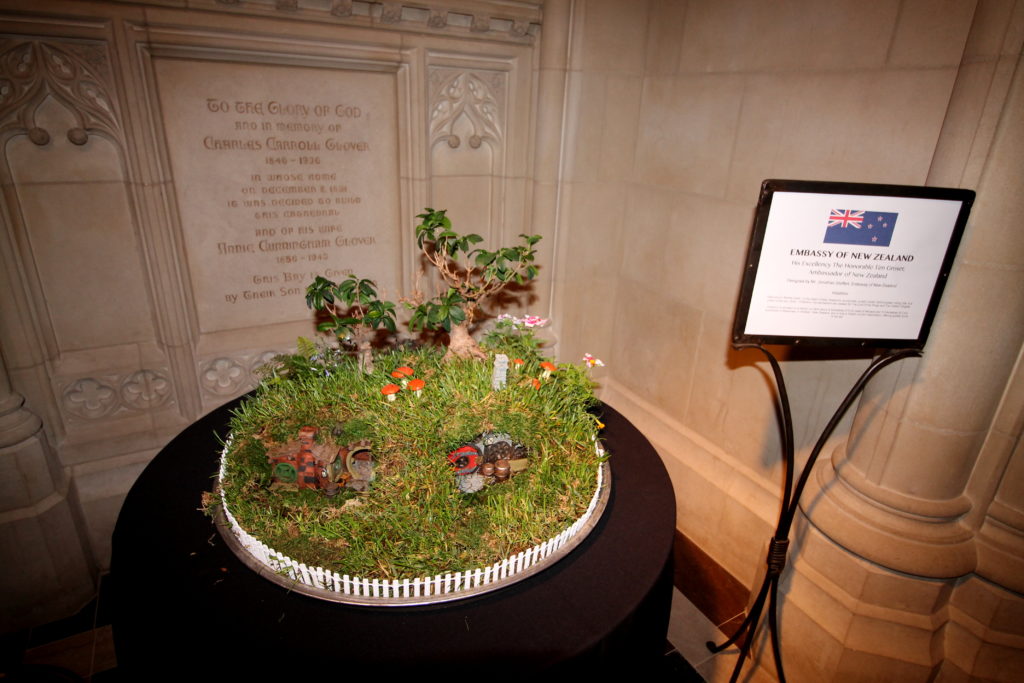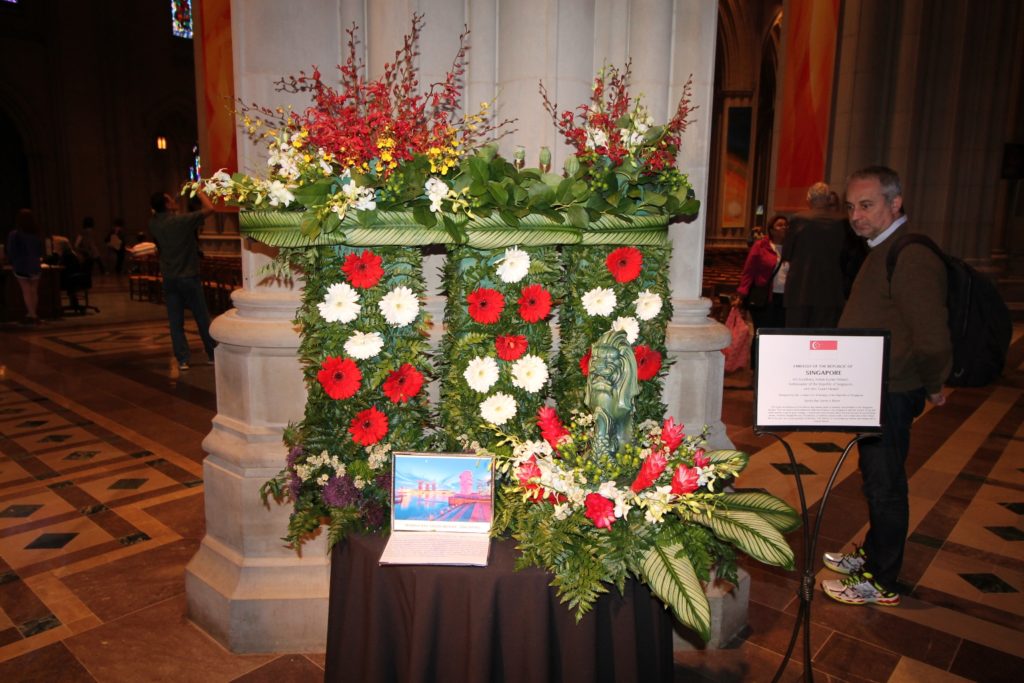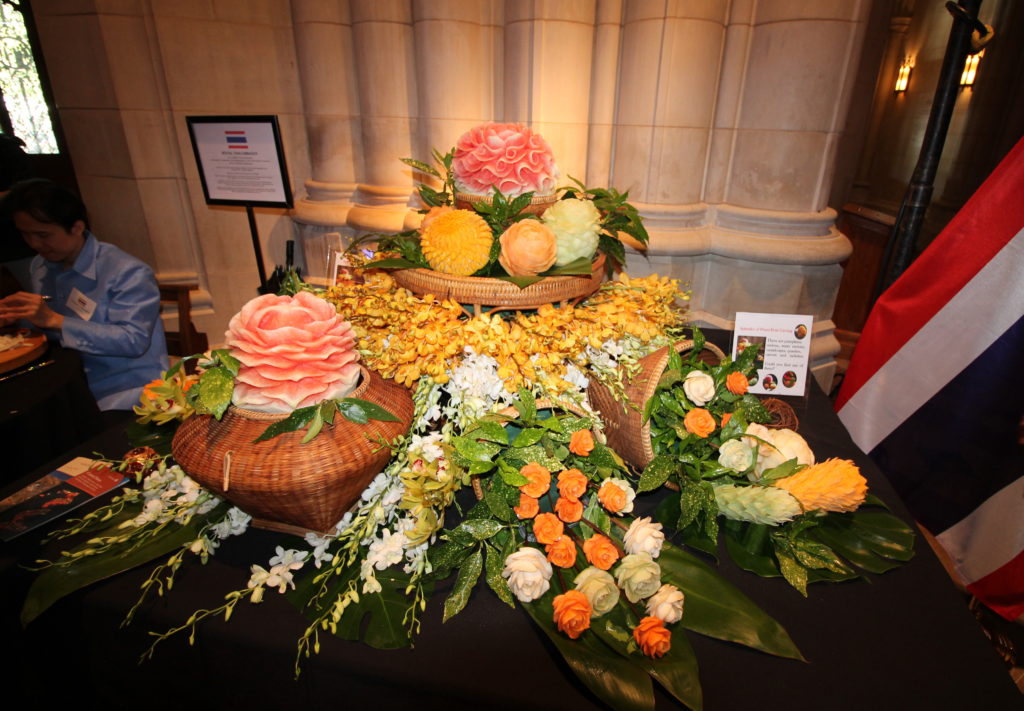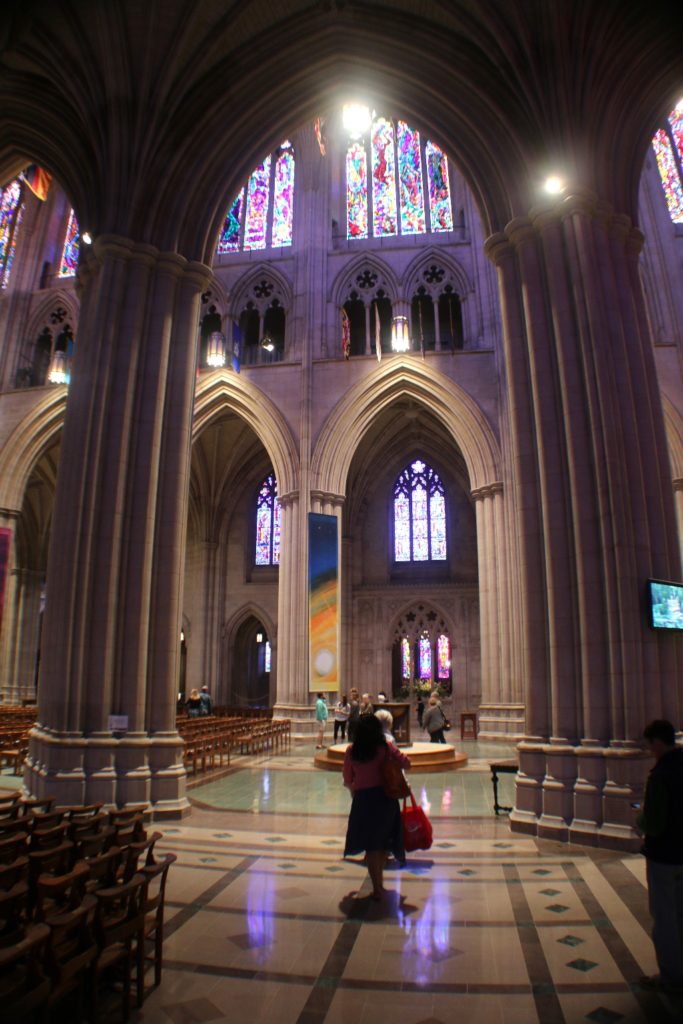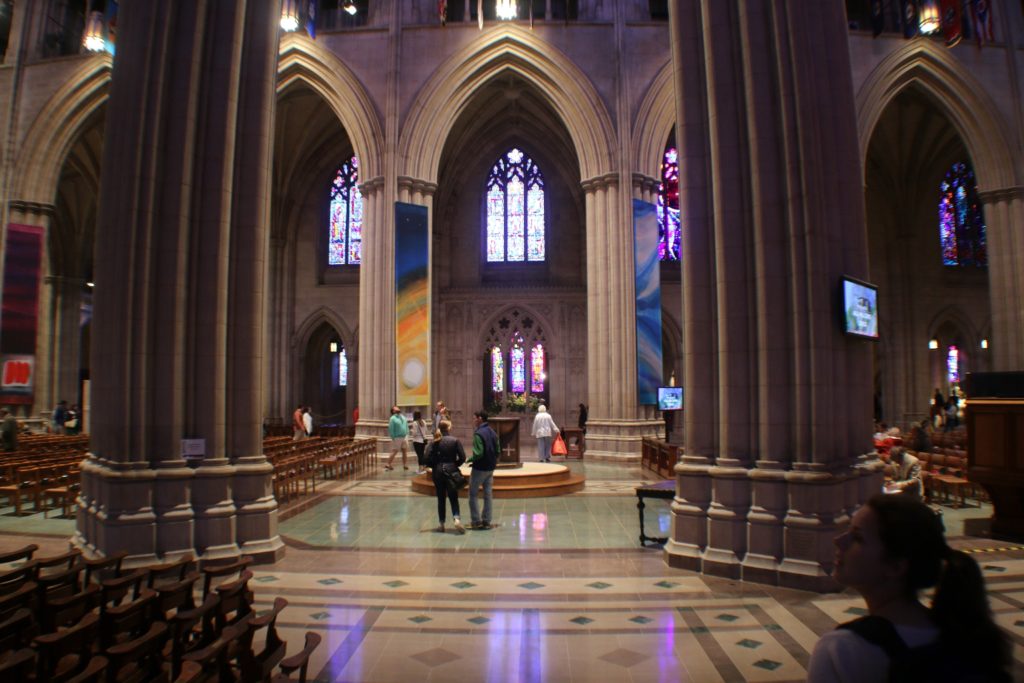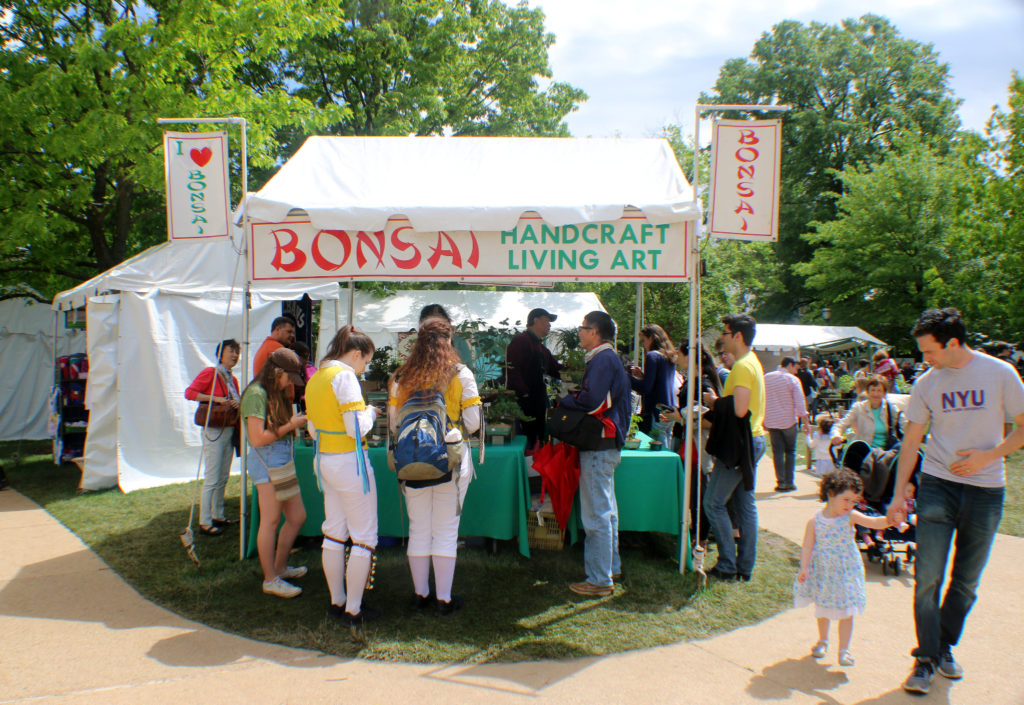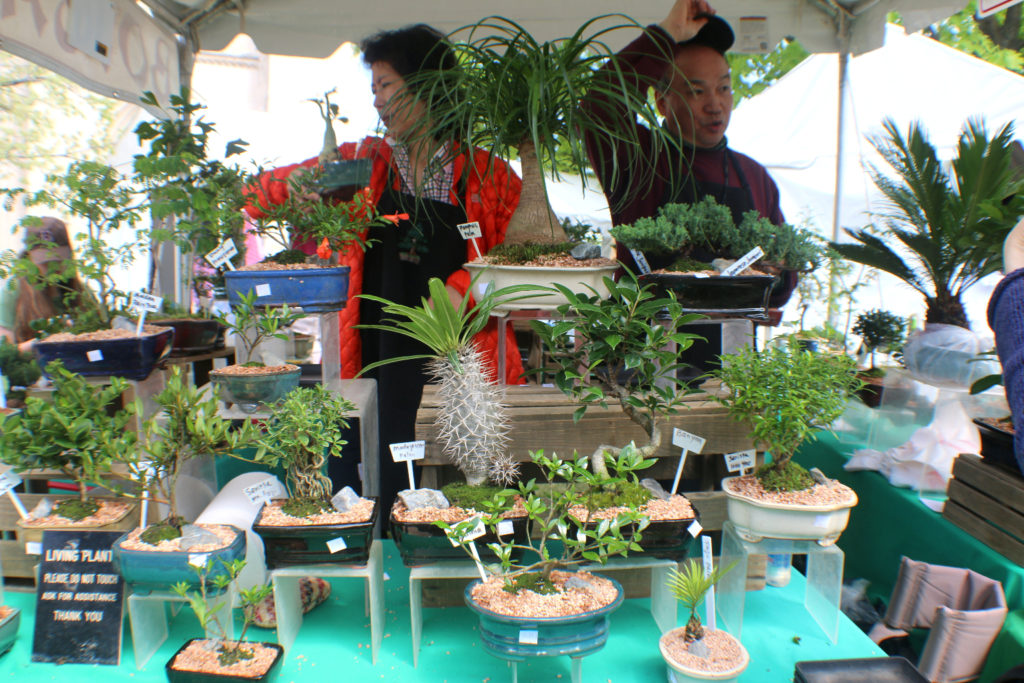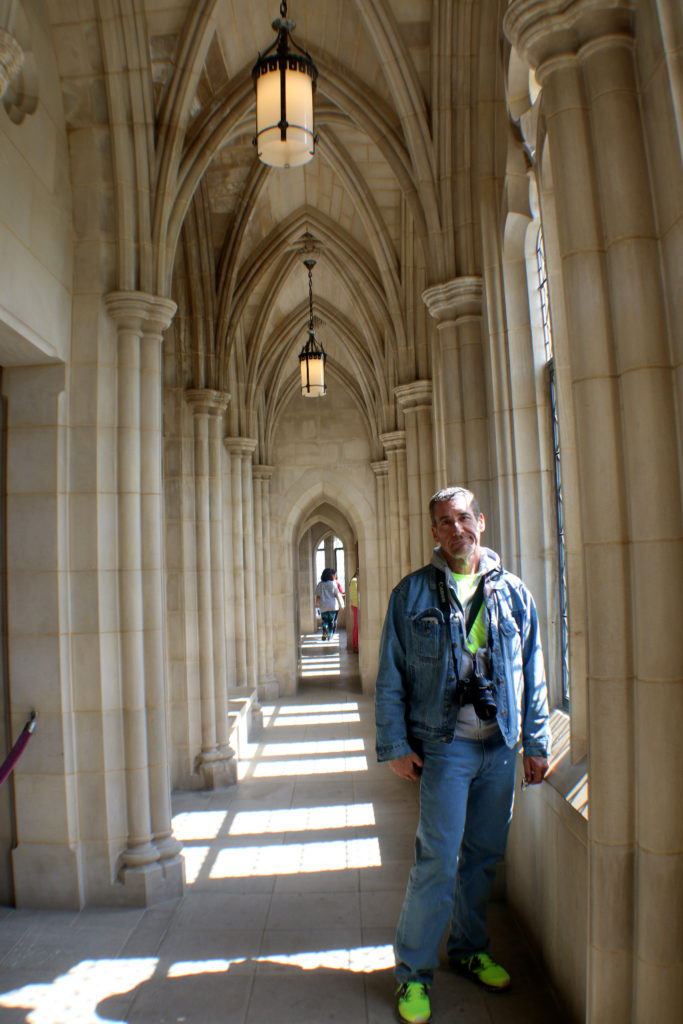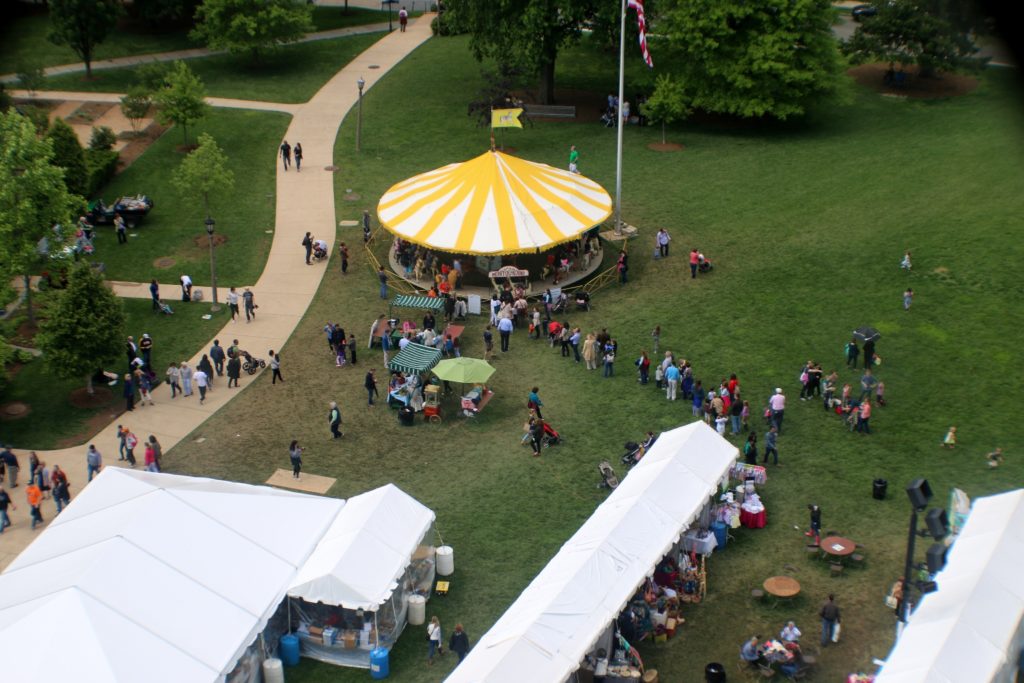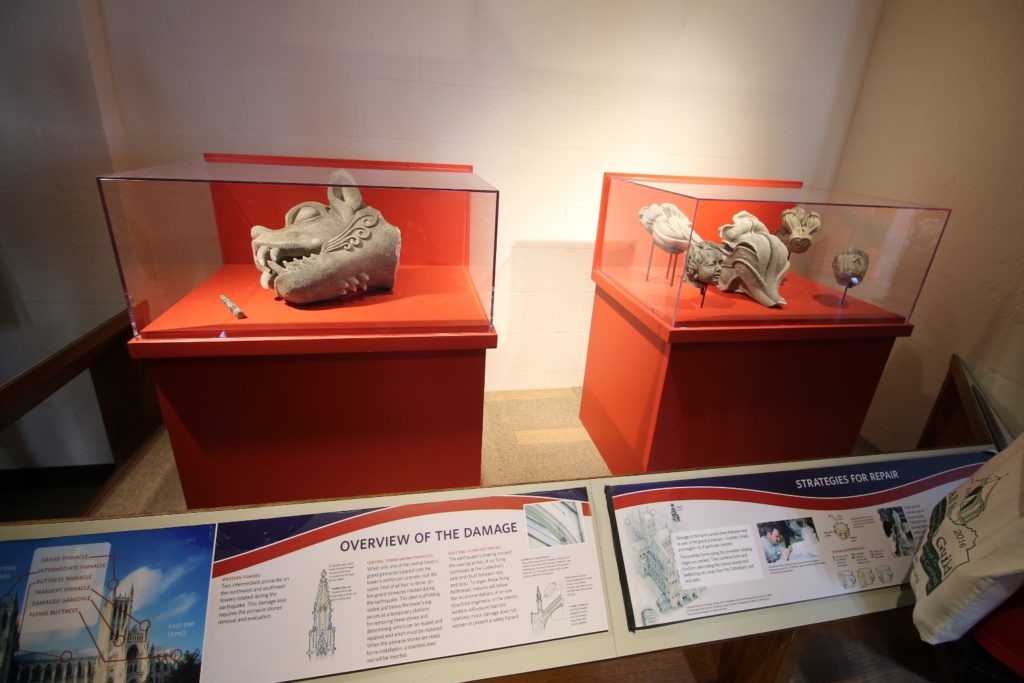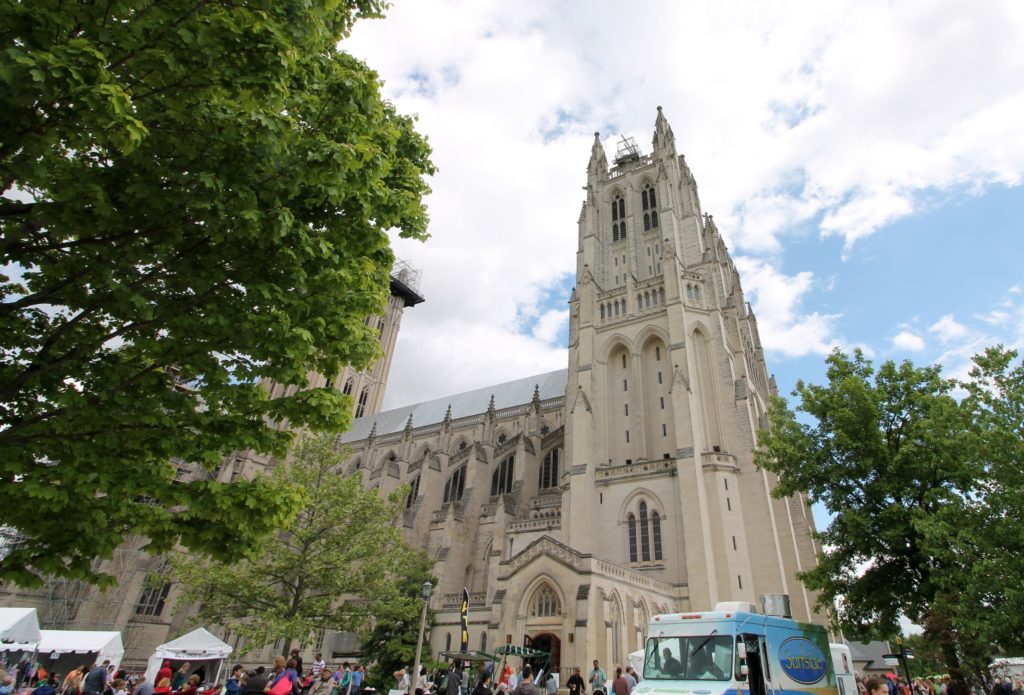This Saturday Dave and I decided to spend the day in DC. The plan was to see some of the embassies participating in the Passport DC annual program and visit the Flower Mart at the Washington National Cathedral in the afternoon. The Passport DC cultural program runs each May and lasts three Saturdays in a row: Around the World Embassy Tour, Shortcut to Europe and National Asian Heritage Festival. We visited Around the World Embassy Tour 3 years ago and had a great experience.
We started our journey by taking the train to the Dupont Circle Metro Station and walking from there to the Embassy of Peru. We came right at opening time, so it didn’t take long standing in line to get inside the embassy.
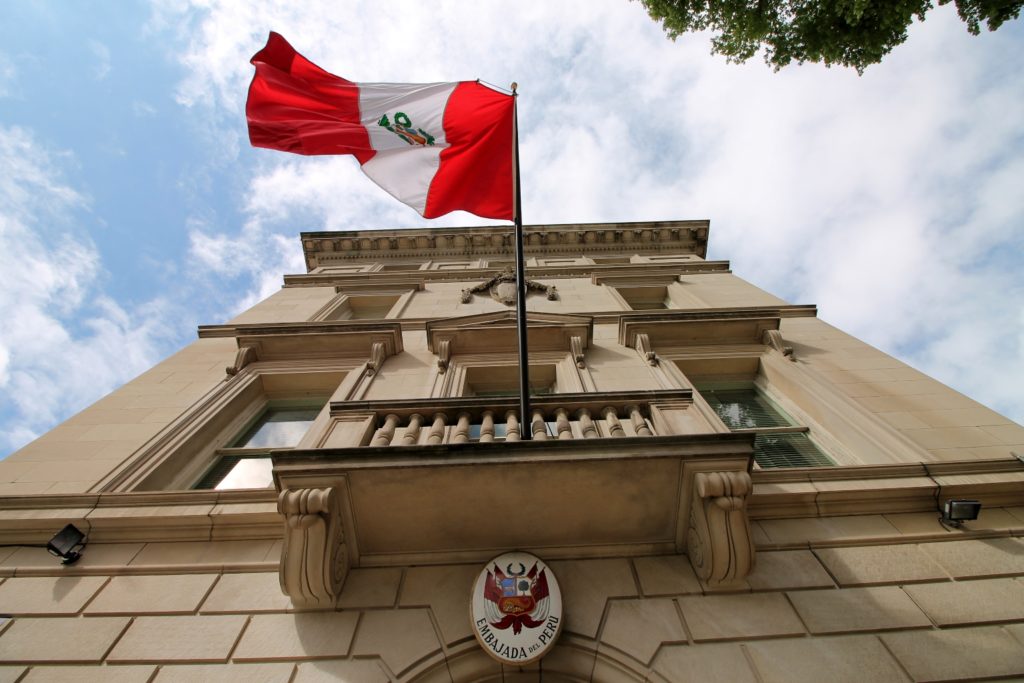
The Embassy of Peru showcased one of the Peruvian main attractions – Machu Picchu. We are planning to visit it some day.
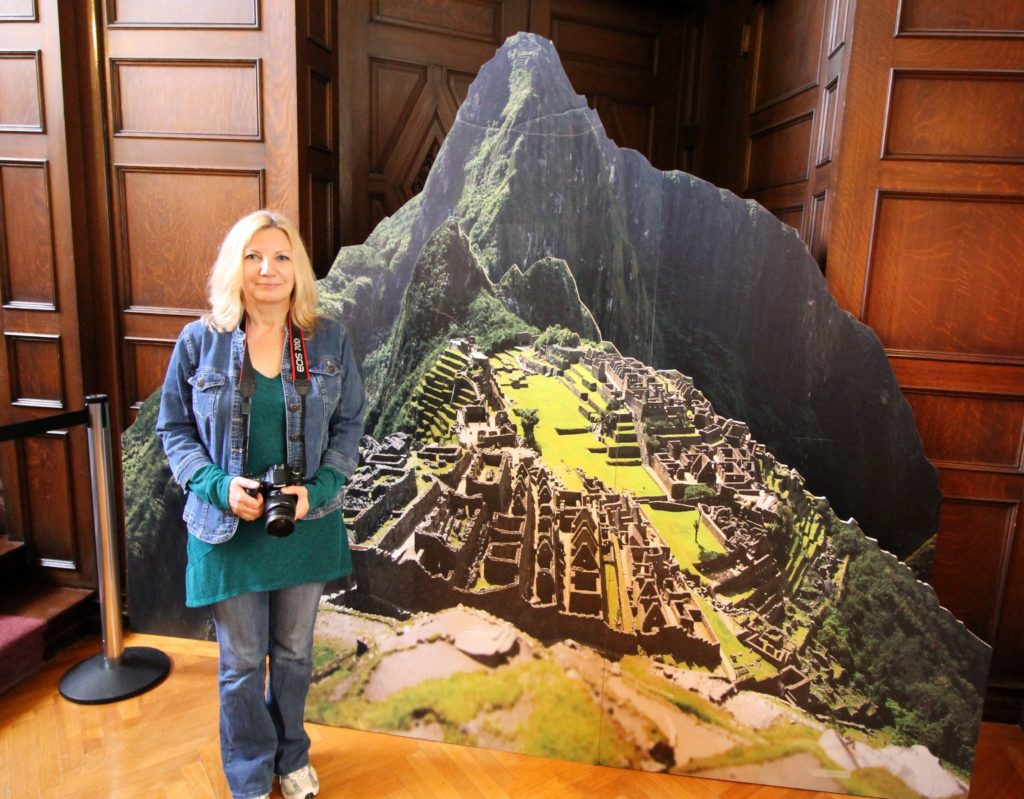
We walked through a tasting room, where samples of Peruvian soda, desserts, and Pisco Sour were offered. The Peruvian Pisco Sour drink requires the use of Peruvian Pisco as the base liquor and the addition of Key lime (or lemon) juice, syrup, ice, egg white, and Angostura bitters.
Then we looked at the Ambassador’s Room on the second floor.
Jewelry, craft and other goods were offered for sale on the first floor of the embassy.
Made of red and black seeds, jewelry by Evelyn Brooks Designs looked beautiful and unique. I was curious about the material the jewelry is made of, so I looked it up on the web. This is what I found. “Evelyn Brooks Designs create exotic jewelry pieces that are inspired by natural elements and Peruvian art. She offers eco-friendly jewelry designs by working with recycled sterling silver, natural gemstones, beads and seeds from the Amazons. Evelyn Brooks Designs are known for their designs with the red and black Huayruro seeds, which are a symbol of good luck, happiness and fertility.”
There was live alpacas right outside the embassy. I don’t think I’ve ever seen them before. Dave said they are valuable for their wool.
We decided to attend the embassies in this area first and then move further along the Massachusetts Avenue, where most embassies are situated. Here, we just are approaching The Embassy of Mozambique.
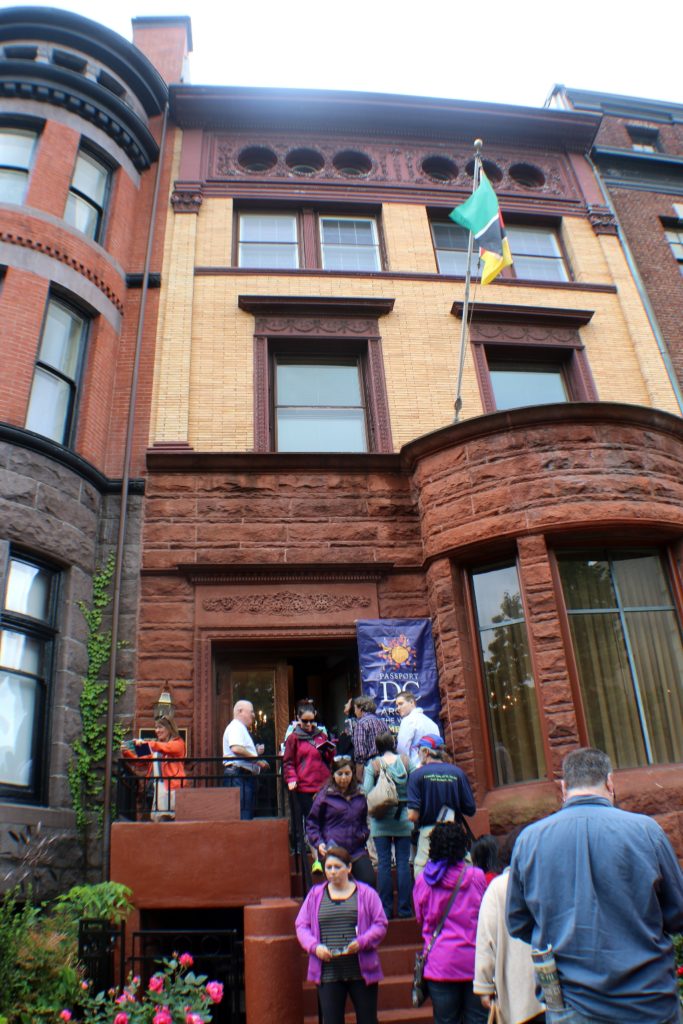
And took some pictures of each other next to the flag of Mozambique hanging at the door while standing in line.
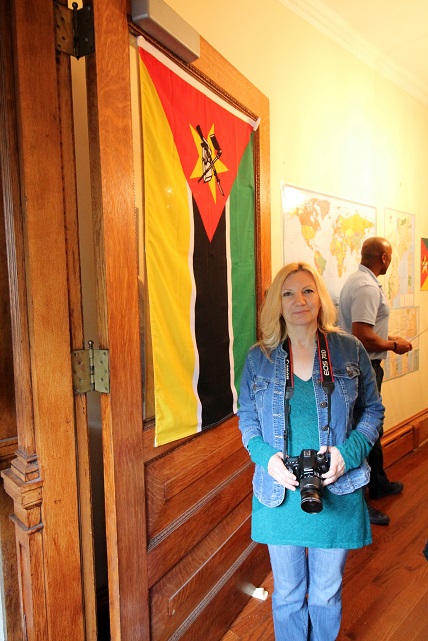
Luckily, the line wasn’t huge and we got into the embassy almost in no time.
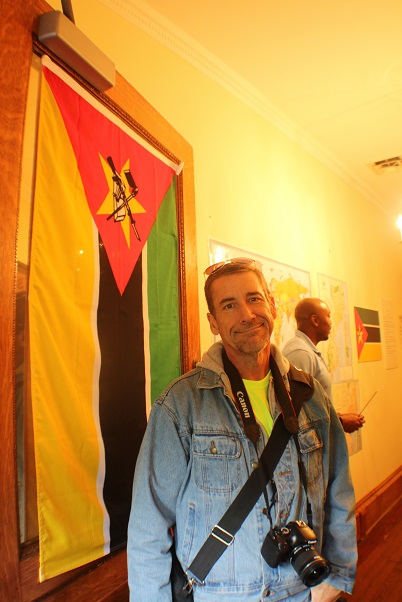
The embassy showcased art and craft of Mozambique and offered some brochures.
More art and fashion were presented on the second floor.
There are a few portraits of the President of The Republic of Mozambique, Filipe Nyusi, inside the embassy.
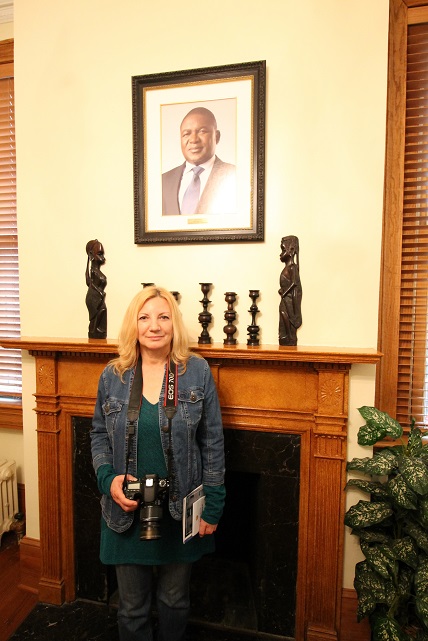
The pictures of wildlife and nature of Mozambique were displayed here, with a separate panel dedicated to the Gorongosa National park. Gorongosa is home to a large diversity of animals and plants – some of which are found nowhere else in the world.
And something new that we learned today. The cashew is obtained from cashew fruit or cashew apples, which were presented on the table. I thought that cashews are nuts, but they are actually seeds. It requires a lot of manual labor to process the seed due to its fragility. Today, Mozambique ranks as one of the top global cashew producers.
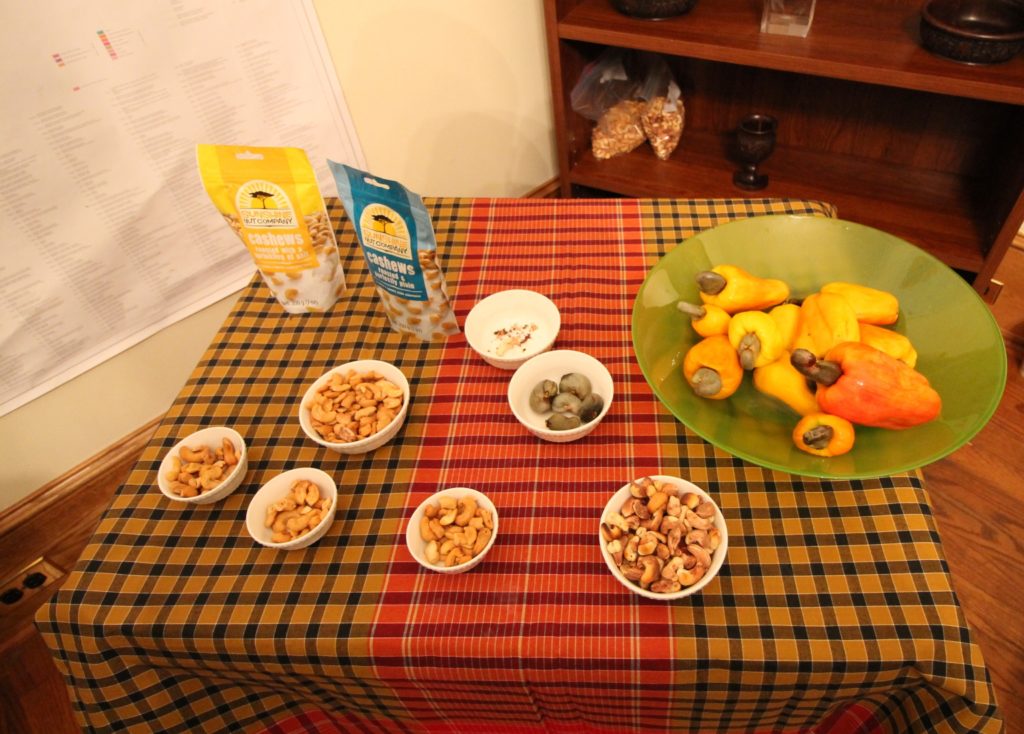
Here is this fruit still hanging on the tree. I found some interesting details about cashew apples and a picture of this fruit hanging from a tree on the tecnoserve blog. “December is peak harvest time for cashews in northern Mozambique. Smallholder farmers here pick bright yellow, orange and red cashew apples from some 22 million evergreen trees. The bottom of each cashew apple bears a kidney-shaped seed, which we know as the cashew nut. By the end of the harvest season, a farmer in this region will sell an average of 220 pounds of raw cashew nuts to nearby processing facilities, where the nuts undergo a complex series of steps – from steaming, cooling and shelling to peeling, grading and packaging – before they are ready for commercial consumption.”
Here is one more portrait of the president of Mozambique that we saw on our way out of the embassy.
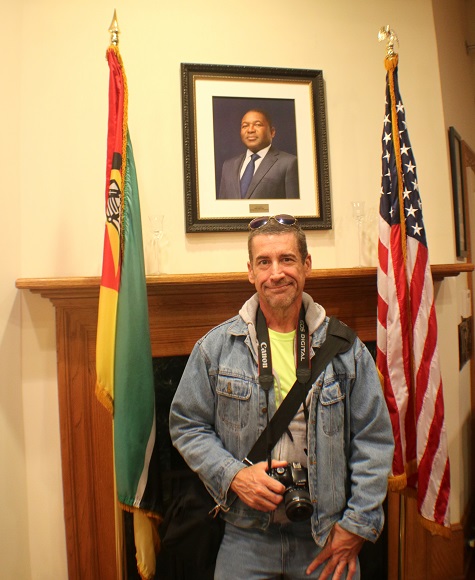
The Embassy of Botswana is located next to The Embassy of Mozambique, so we went there next.
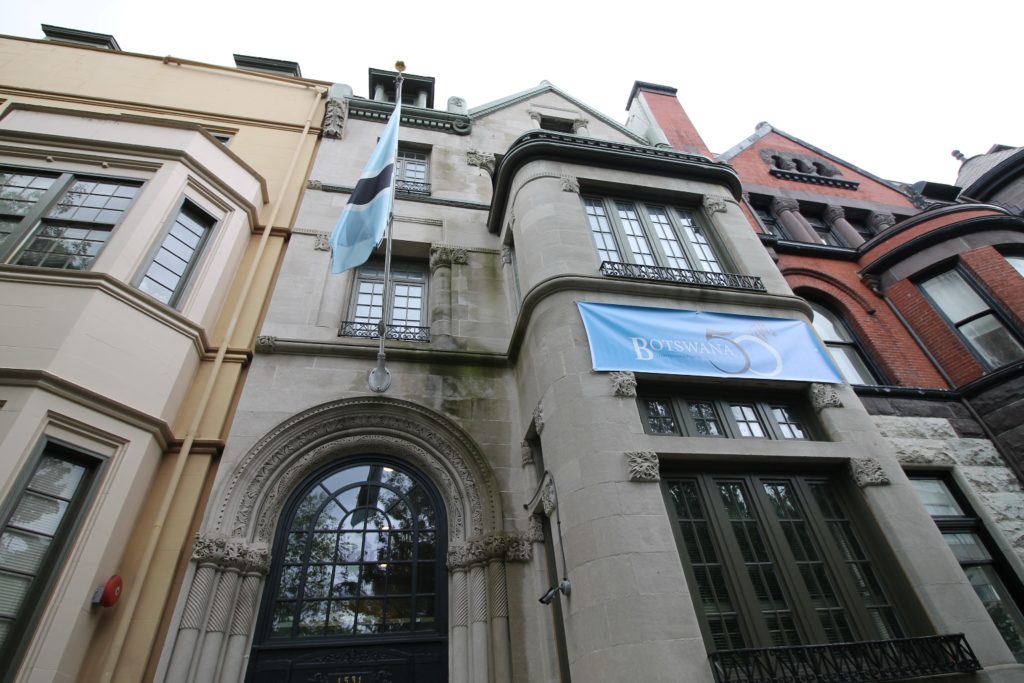
Botswana is famous for its wild life and safari. We saw a short film about Botswana’s wild animals presented in one of the embassy’s room.
A Coat of Arms, seen below, stood out in the embassy. It has the following interpretation:
Three wavy blue bands in the center representing Botswana’s reliance on water.
Three cog-wheels in mesh representing Industry.
At the base a bull’s head symbolizing the cattle industry.
Two Zebras, one supporting an Elephant’s tusk, representing the natural fauna of the country.
A head of sorghum representing Agriculture.
The motto “Pula” means “let there be rain”.
Pula also represents the unit of currency of Botswana – Pula (BWP) (1 EUR = 9.39 BWP/ 1 USD = 6.53 BWP). Pula means “rain” and “greetings”.
Besides promoting tourism, the embassy showcased the basketry and rug tapestry. Various baskets and rugs were exhibited along the room. The baskets are so pretty!
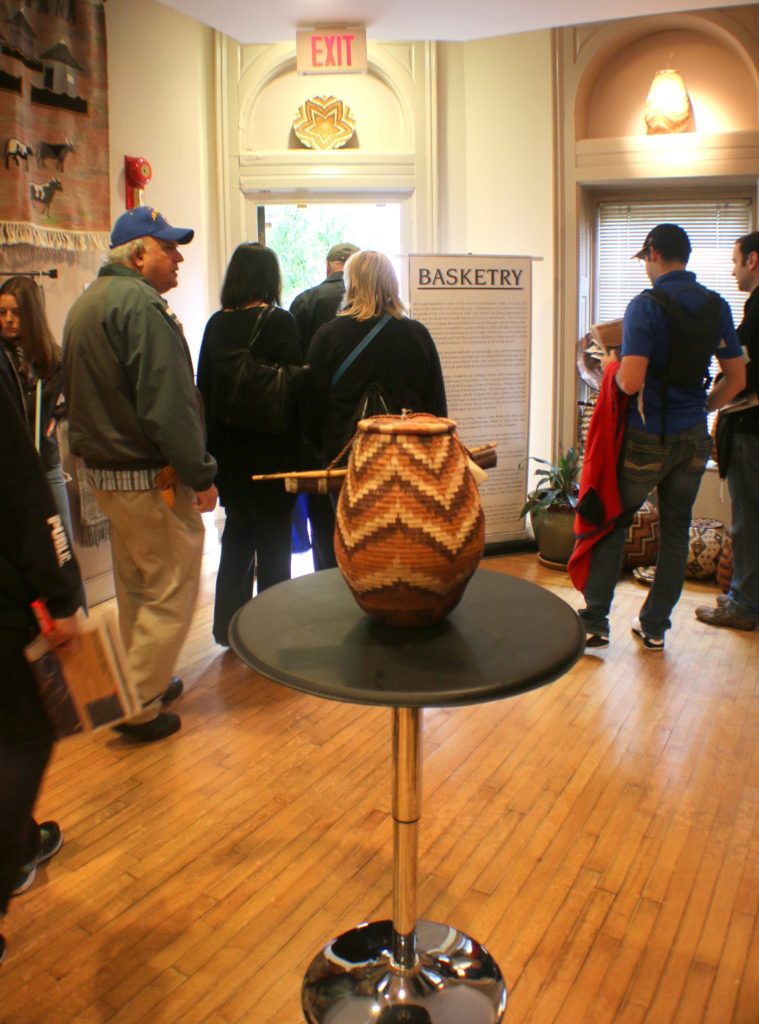
Next we moved towards the Embassy of Argentina across the street. The line to get into the embassy was so long that we decided to skip this embassy.
But we had no luck after that. The lines were unbelievably long to each embassy in the area. Passing the beautiful embassy of Indonesia with a long line around it.
We stopped at the statue of the Hindu goddess Saraswati. She stands in a garden in front of Indonesia’s embassy, glowing white and gold, with her four arms upraised. Saraswati is the goddess of learning and wisdom. At her feet are three children studying. It was crafted by three Balinese sculptors in three weeks. Impressive!
We decided not to waste time in the huge lines to the embassies, but instead visited the Flower Mart at the National Cathedral. To get there we needed to take the metro and walk from there to the Cathedral about 1.3 miles or take the metro bus. On our way to the metro station we stopped at the Mahatma Gandhi monument in front of the Embassy of India. The monument is a gift from the Indian Council for Cultural Relations. It pictures Mohandas Karamchand Gandhi in ascetic garb, in reference to his 1930 march against a salt tax in India. The statue’s inscription quote reads, “My life is my message.”
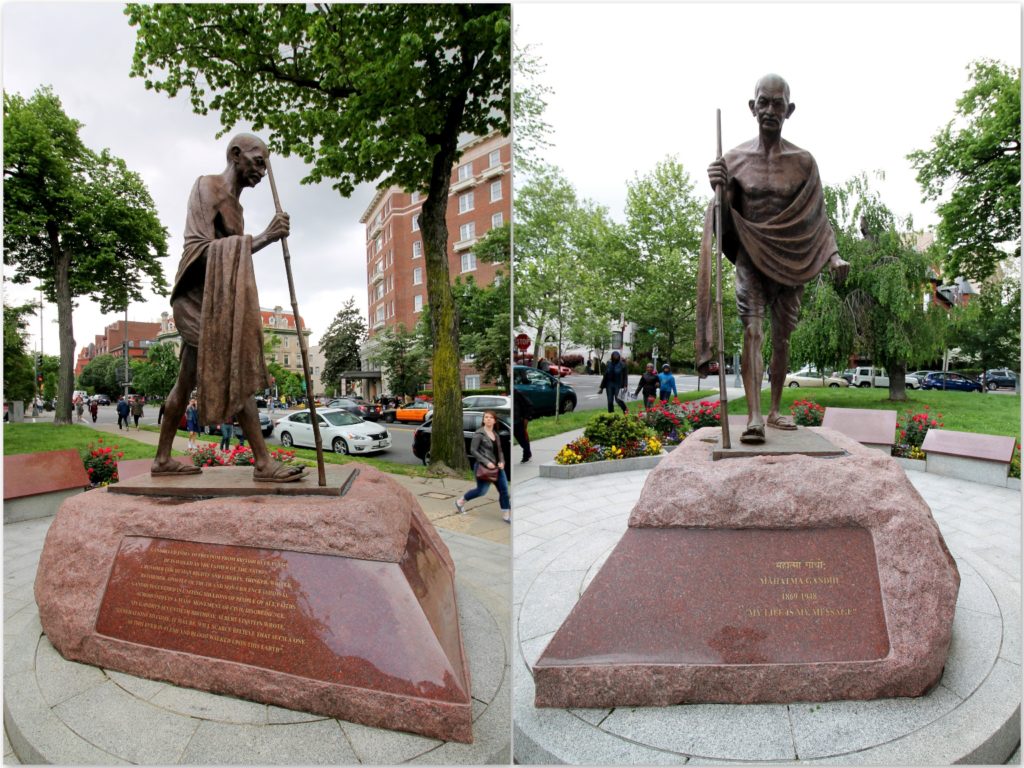
Passing the Embassy of Columbia. The line to the embassy is very long too, but we stopped to enjoy the dancing there.
We agreed on walking from the Tenleytown metro station to the Cathedral. The walk was nice and relaxing along the beautiful Wisconsin Avenue. Somewhere in the middle of our walk we stopped at Cactus Cantina, a Tex-Mex Restaurant, for lunch. It was nice sitting outside on the patio and watching people walking by.
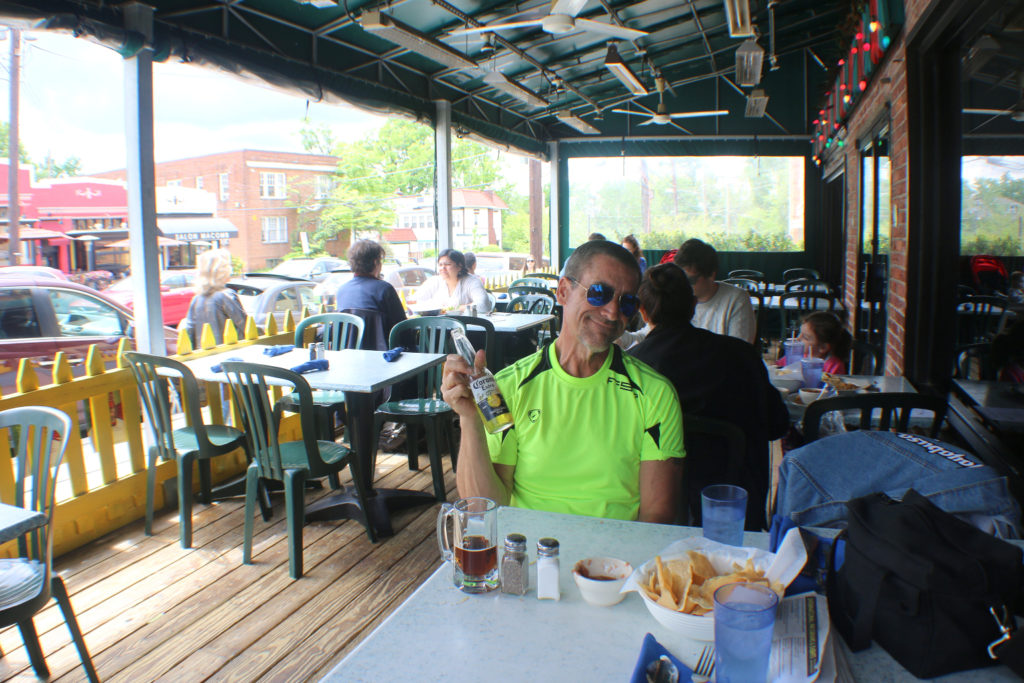
The Flower Mart at the Cathedral is an annual event with food, an entertainment program and a huge sale of gardening equipment. This year, about 40 embassies presented the beautiful flower compositions inside the Cathedral’s nave. Besides, the Cathedral itself is gorgeous outside and inside. It is currently under renovation after the earthquake in 2011, which did quite a bit of damage to the building. That is why a part of the building was covered with scaffolding as seen on the left side of the cathedral.
It didn’t rain that day. In fact, it was nice and sunny later on. But at the time we approached the cathedral, the sky was covered by grey dense clouds with a little white stripe of the clear sky at the horizon and the cathedral in the background.
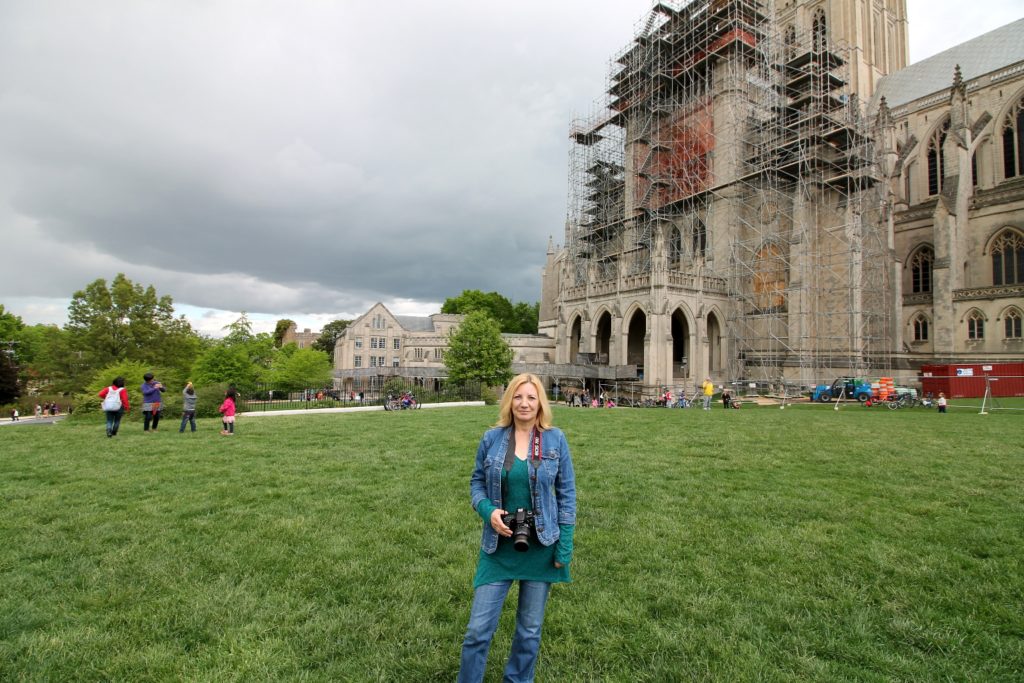
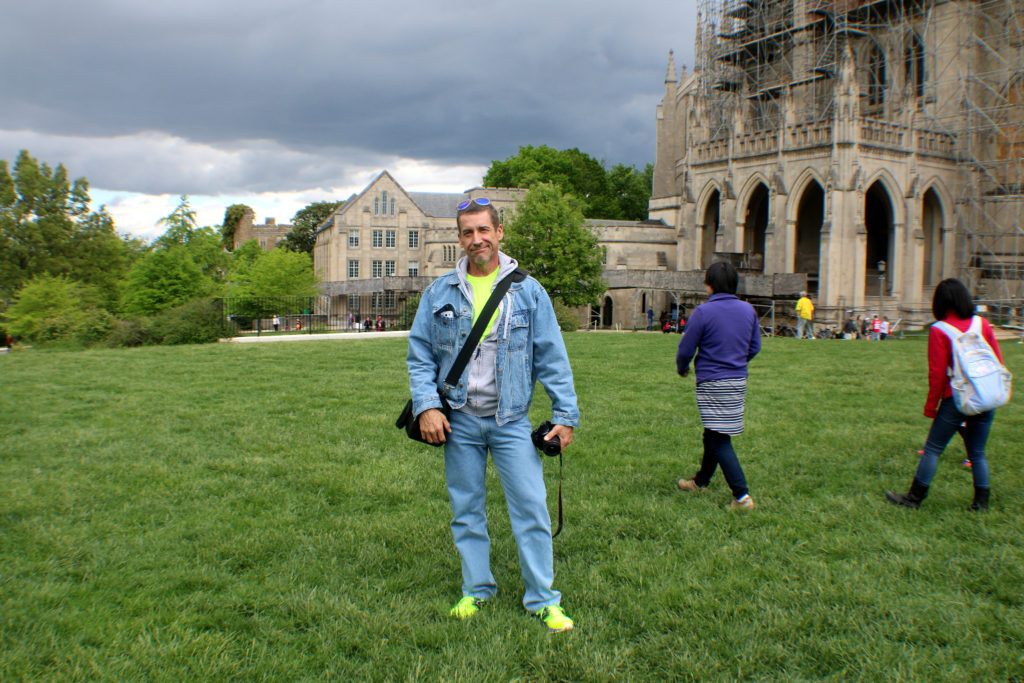
We walked inside the cathedral and were impressed by its beauty. The official name of the Washington National Cathedral is The Cathedral Church of St. Peter and Paul. Modeled on English medieval-style churches, the Washington National Cathedral represents the second-largest in the United States and one of the 6th largest cathedrals in the world.
Of particular note in the church is the organ, constructed of more than 8,000 pipes. There is the choir and a partial view of the organ pipes along the sides.
The flags represent each state in the United States, the District of Columbia and U. S. territories in the order the states entered the union. One state each week is remembered in prayer services.
The “High Altar”, also called The Jerusalem Altar, is made from stones quarried at Solomon’s Quarry near Jerusalem. In the floor directly in front of the altar are set ten stones from the Chapel of Moses on Mount Sinai, representing the Ten Commandments as a foundation for the Jerusalem Altar. Behind the High Altar is the magnificent Ter Sanctus Reredos, featuring 110 carved figures surrounding the central figure of Jesus.
Imposing wrought iron gates welcome visitors and worshippers into the quiet reverence of St. Mary’s Chapel, just to the left of the high altar.
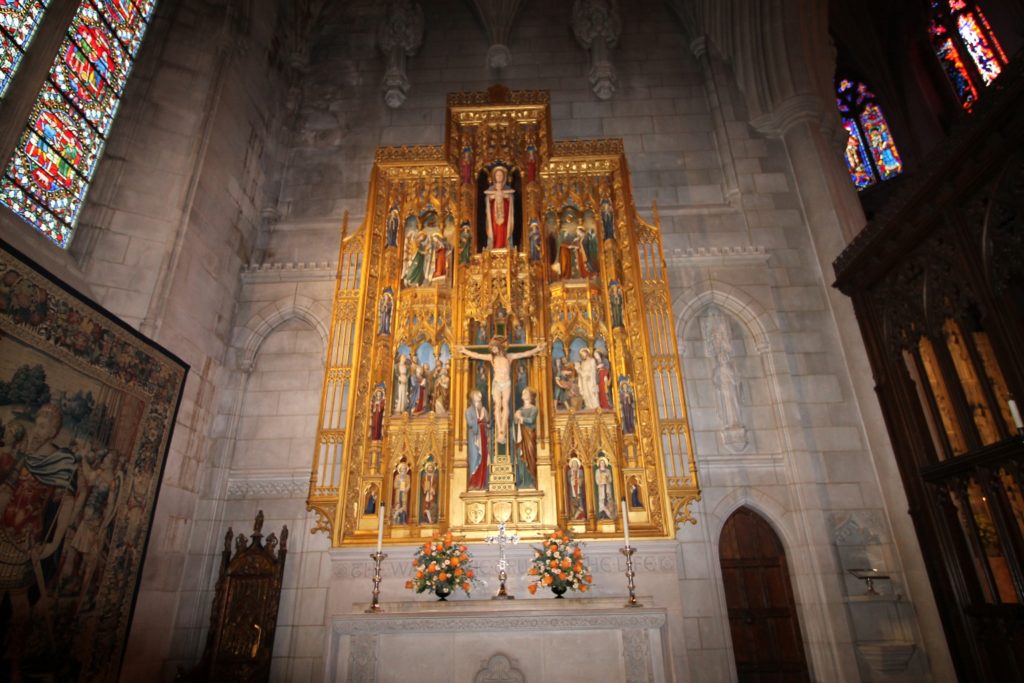
The War Memorial Chapel at the Washington National Cathedral recognizes the suffering or war and honors the men and women who have dedicated their lives to their country through service in the Armed Forces. Members of America’s Armed Forces have come to regard this chapel as their special place in the Cathedral.
The chapels’ three Freedom windows honor those from biblical times to the mid-20th century who gave their lives for the cause of freedom. These windows depict several scenes from World War II, including the D-Day invasion, the Battle of Iwo Jima, the liberation of Europe and the Battle of Midway, among others.
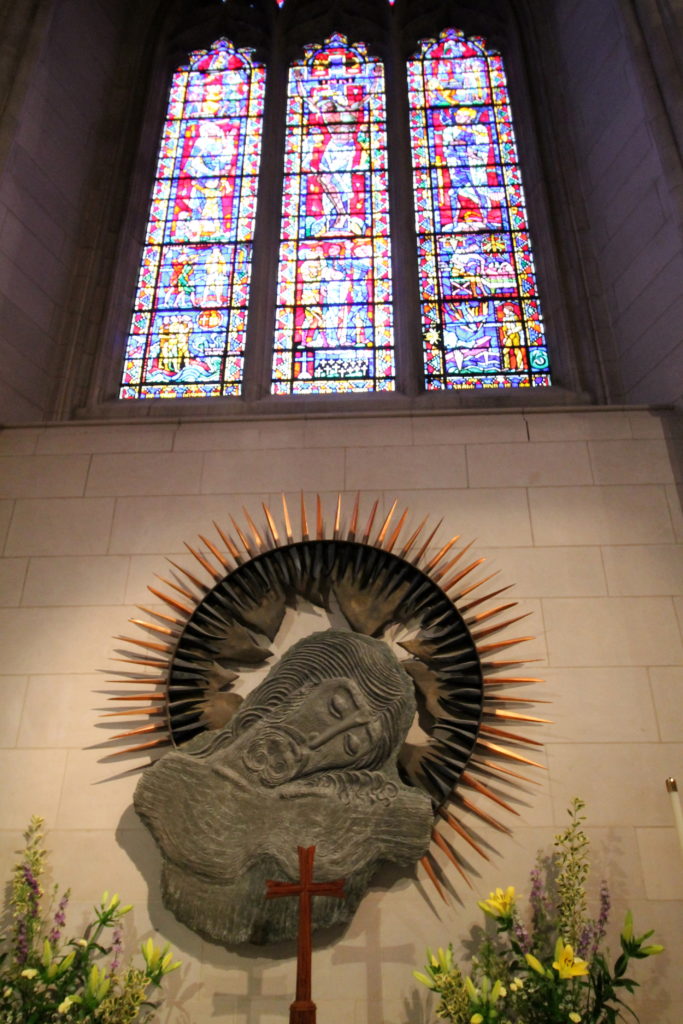
A 9-by-12-foot needlepoint tapestry uses the biblical symbol of the Tree of Life to honor the armed services and illustrate the expansion of the United States. Emblems of the Armed Forces and the Great Seal of the United States surround the tree, which features the seals of all 50 states and the District of Columbia.
The Children’s Chapel, Washington National Cathedral. The seats are all decorated with needlepoint pictures of animals.
This is the Canterbury Pulpit, where Dr. Martin Luther King Jr. delivered his final sermon in 1968, just a few days before his assassination. A memorial service for King was held at the cathedral later the same week. One of the three beautiful rose windows is seen in the top left of the picture.
Next, we walked around the cathedral to look at the flower compositions presented by various embassies. This flower composition presented by The Embassy of Switzerland represents the Switzerlad’s flag.
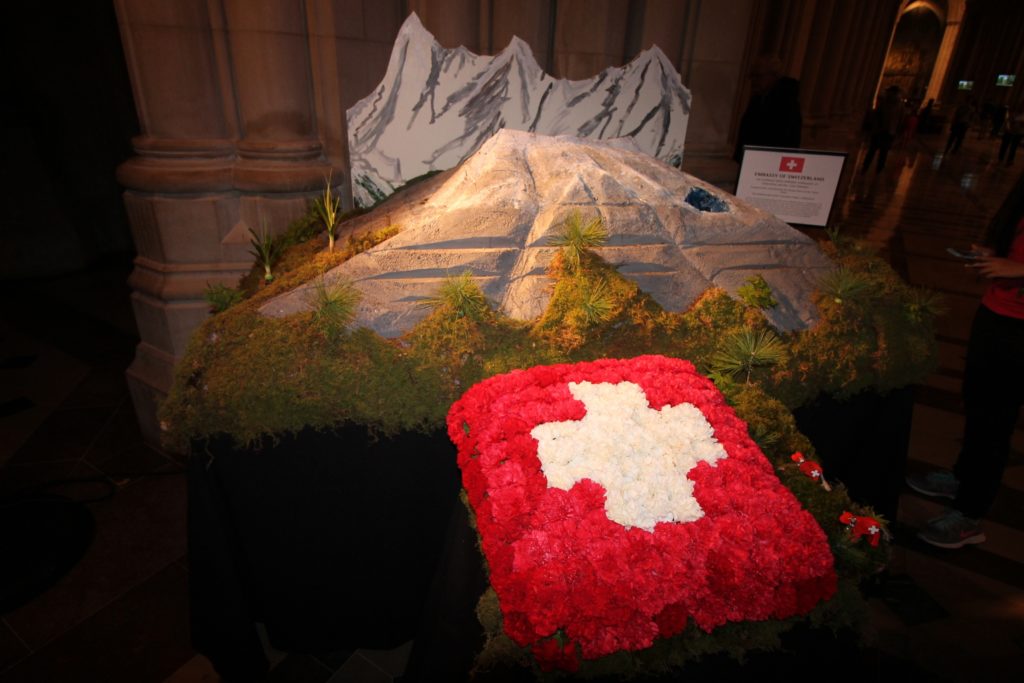
This interesting composition is from the Embassy of Turkey.
The Embassy of Hong Kong presented this beautiful bouquet.
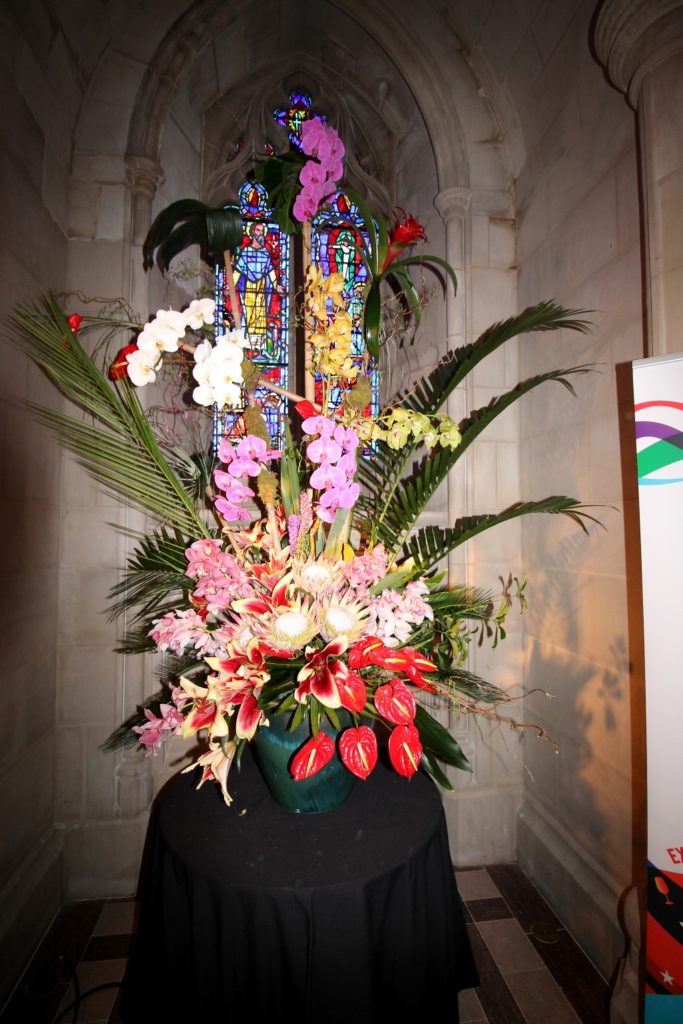
Another interesting flower composition from the Embassy of Shri Lanka.
Embassy of New Zealand was creative.
This gorgeous composition is presented by the City of Singapore.
This composition from the Thai Royal Embassy was the most impressive! All the flowers are carved from various fruit and vegetables: pumpkins, melons, watermelons, cantaloupes, squashes, carrots and radishes.
The Thai artist was carving a watermelon right there.
Other great American heroes are also honored in this, declared by Congress National Place of Prayer. There is the George Washington bay in the west end of the church. We had to take some pictures next to George Washington. 🙂
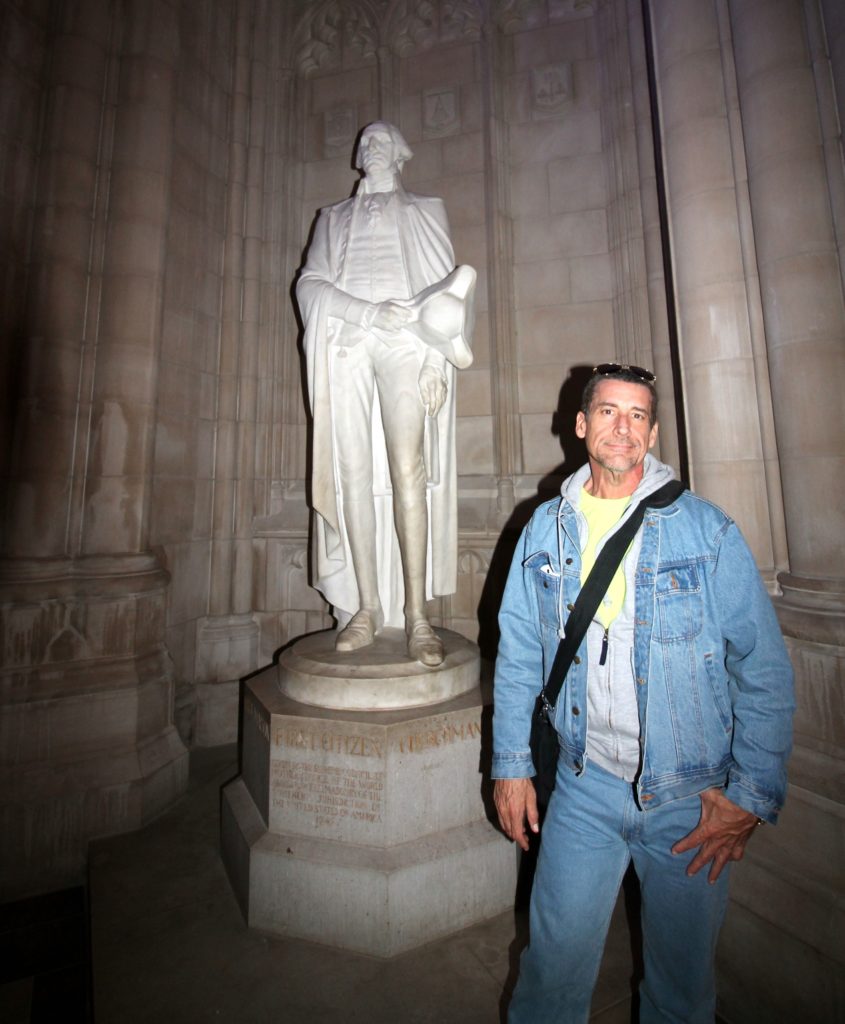
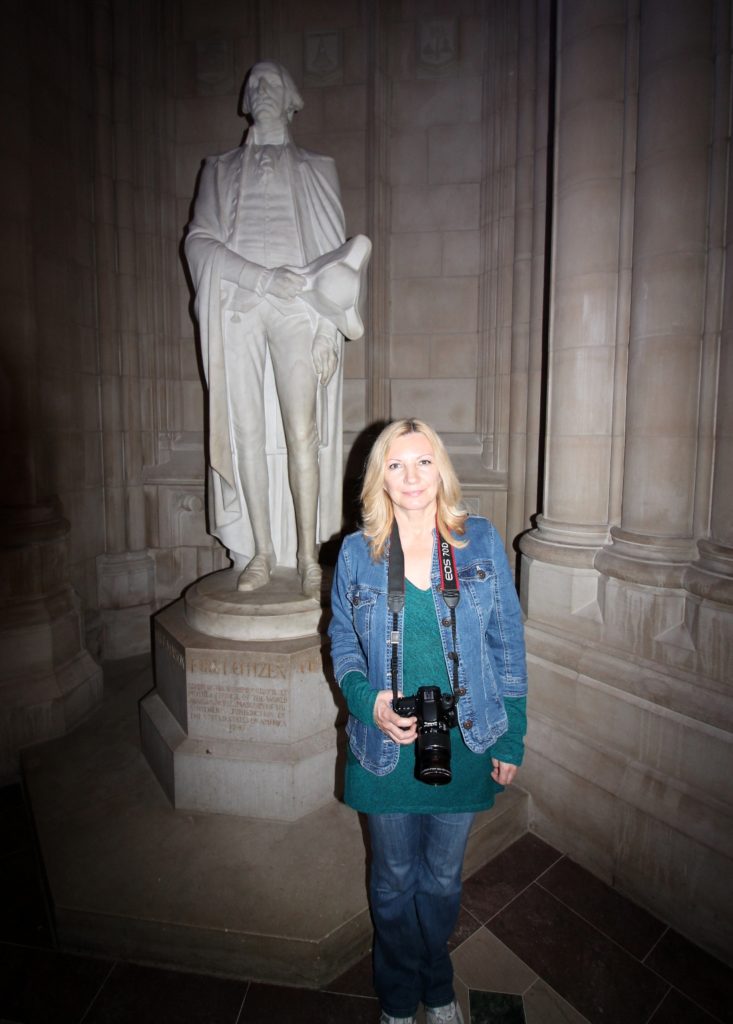
It was amazing to watch the light reflection from the stained windows. So beautiful and unique!
We had a chance to watch the performers singing in front of the Cathedral.
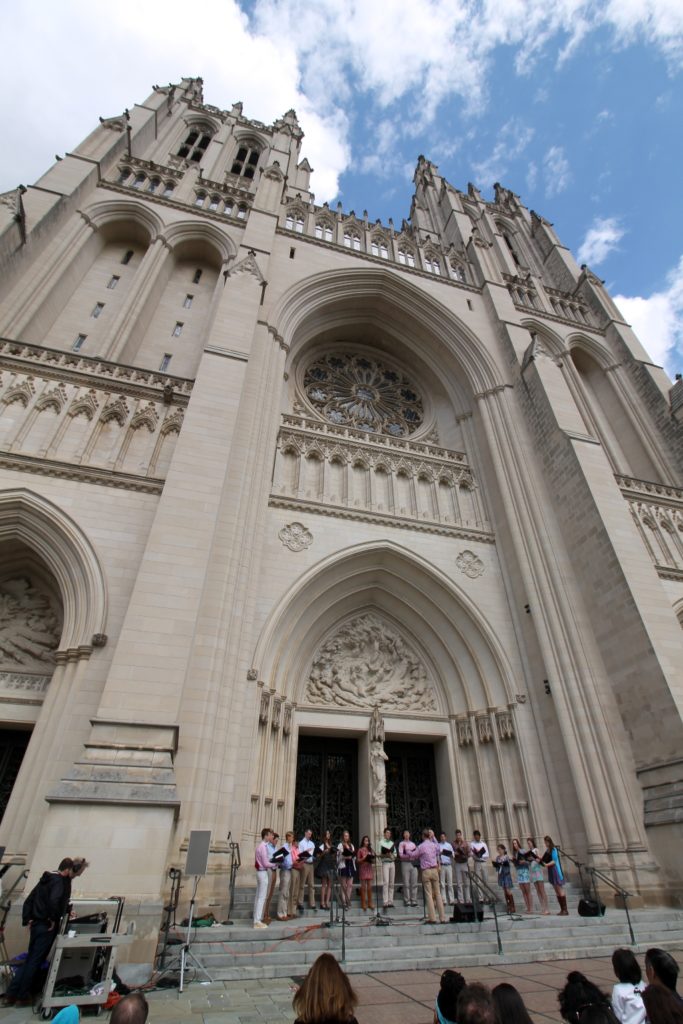
We took a quick walk around the market. I like the tent with Bonsai Handcraft living art.
Beautiful little plants.
We were thinking about climbing the belltour, but the tickets had already been sold. We took the Cathedral’s elevator to the observation deck on the 7th floor instead. It is a pretty observation deck.
Here are the wooden carousel and part of the food court as seen from the observation deck.
The observation deck has a small artifact collection. Here are some pieces broken during the earthquake.
Leaving the National Cathedral. We were able to catch the beautiful sky over the cathedral while we were walking away.
